United Kingdom - 1985
Taking long service leave for the middle school term in 1985 I went on my first trip to Europe.
(A 13-week Melbourne - Bangkok - Hong Kong - Taipei - Japan -
Trans Siberian Railway - UK - Athens - Israel - Egypt - Western Europe - Singapore - Melbourne trip.)
The train trip from Nakhodka on the Pacific Ocean in Russia eventually finished at the Hook of Holland near Rotterdam.
We left the train and got on the ferry Princess Beatrix for the voyage to England.
We sailed at noon and reached the port of Harwich in England at 7pm.
Then we had another train trip from Harwich to London.
London
I had 4 separate stopovers in London between tours.
I had a day at the Lords test match (Australia won the next day).
I queued up for two and a half hours to get a day pass to Wimbledon.
Fortunately they had a small standing area to view the centre court matches.


The 400th anniversary of Marble Arch.
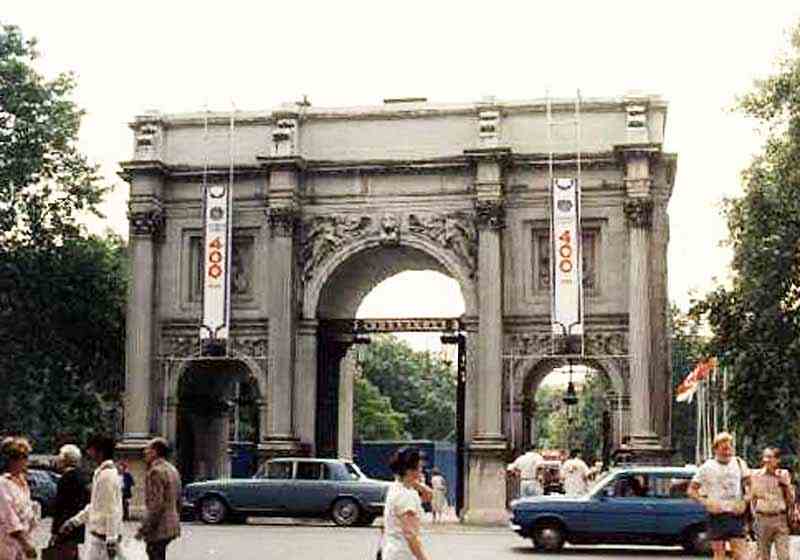
A London church which is nicknamed "the wedding cake".
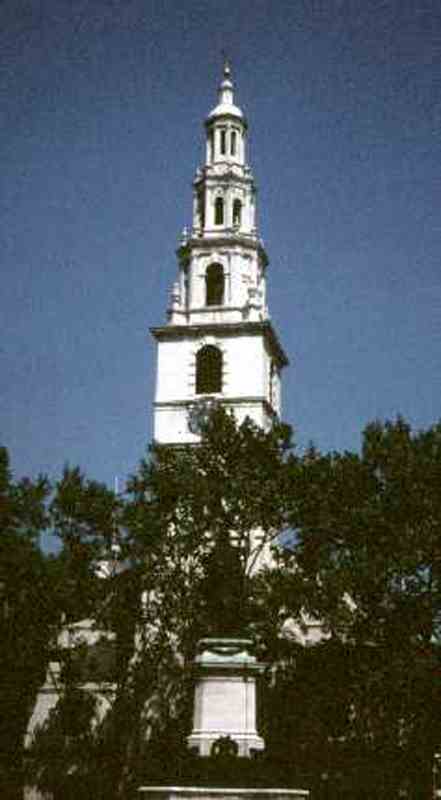
Piccadilly Circus in London.
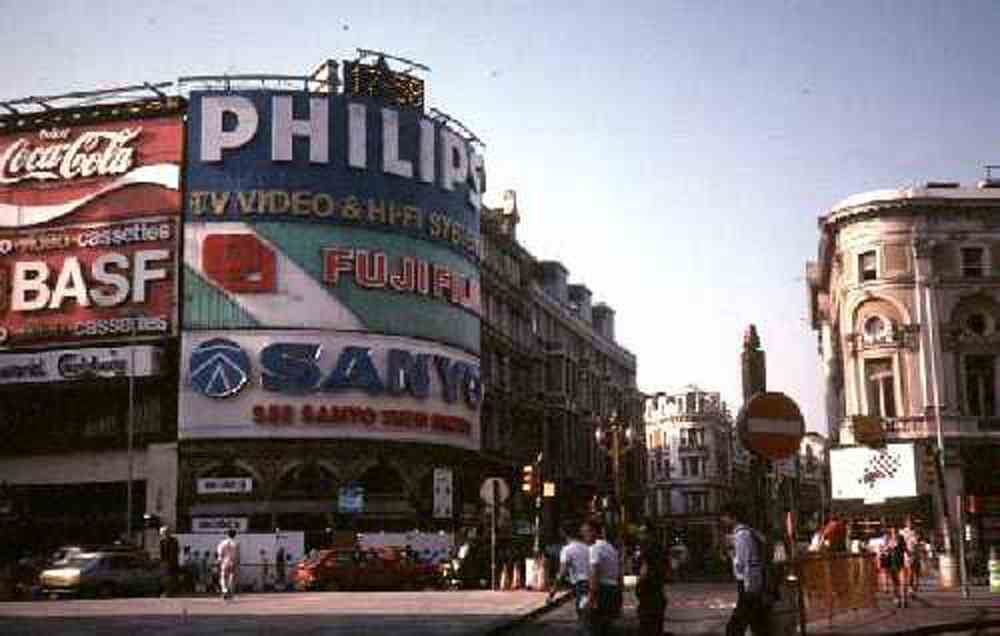
Nelsons Column in Trafalgar Square.
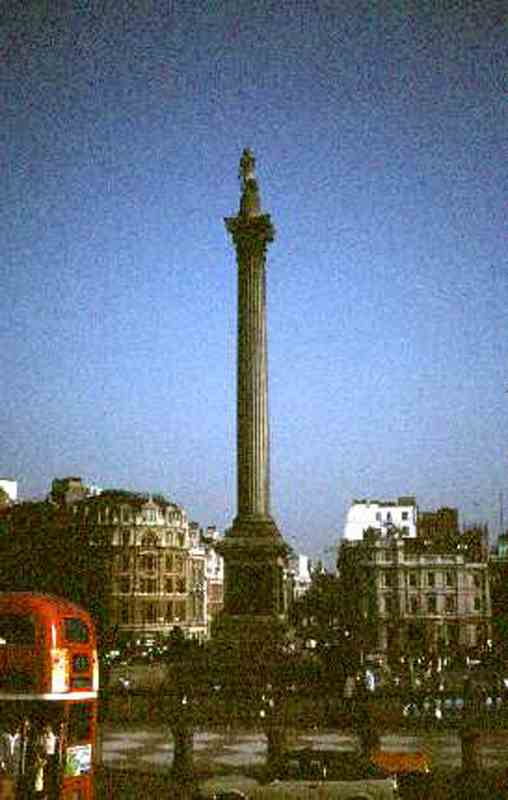
The church of St. Martins in the Field near Trafalgar Square.
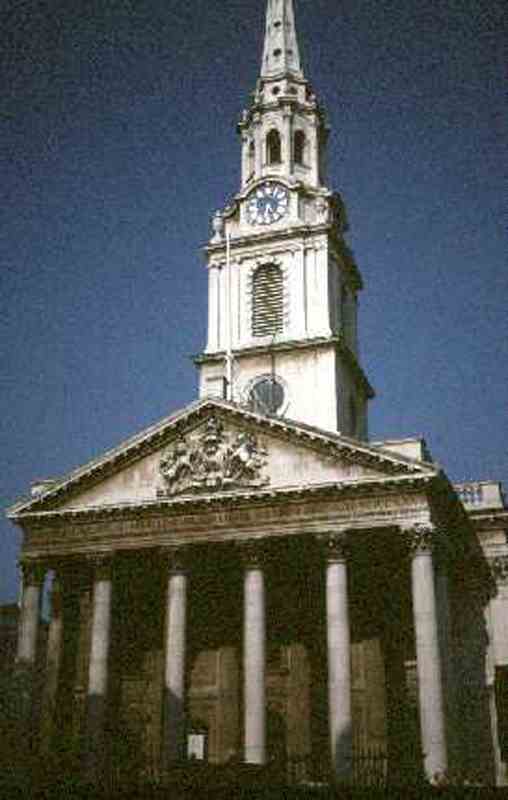
"Cleopatra's Needle" on the Thames Embankment.
The ship that was originally bringing it to London sank in the Bay of Biscay. Years later it was retrieved.
There are shrapnel marks on it from the first of the World War 1 German bombs which exploded near here.
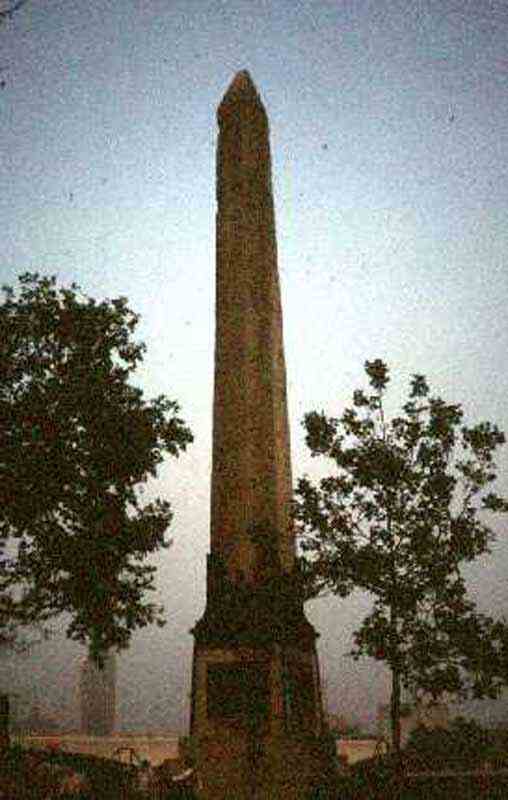
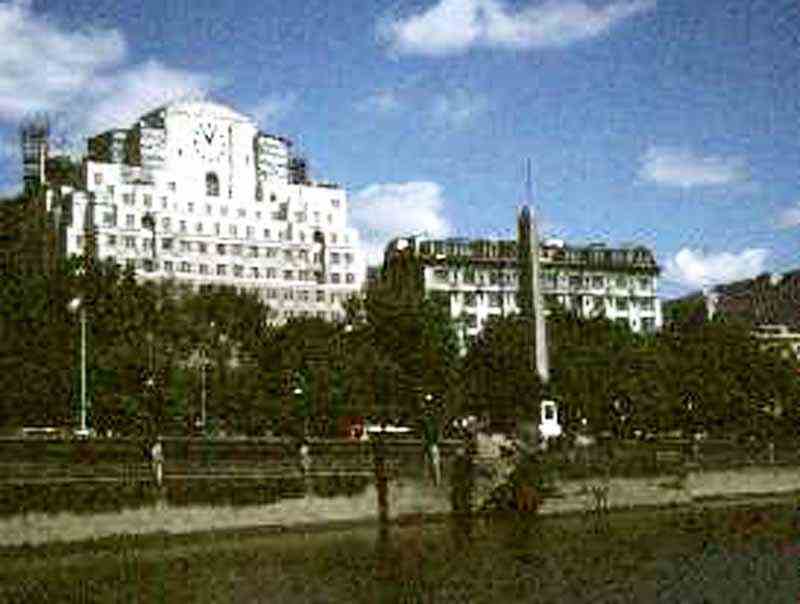
Nelsons Column in Trafalgar Square.
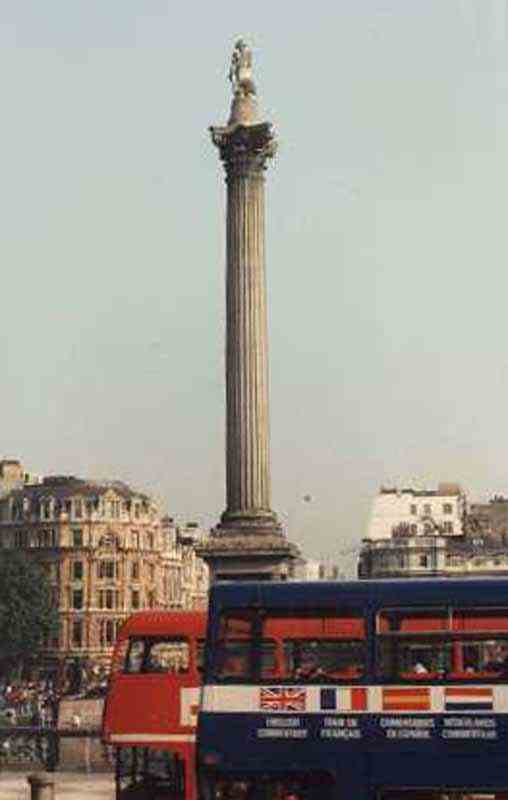
The dome of St. Pauls Cathedral.


The Royal Eagle Hotel in Paddington where I stayed.
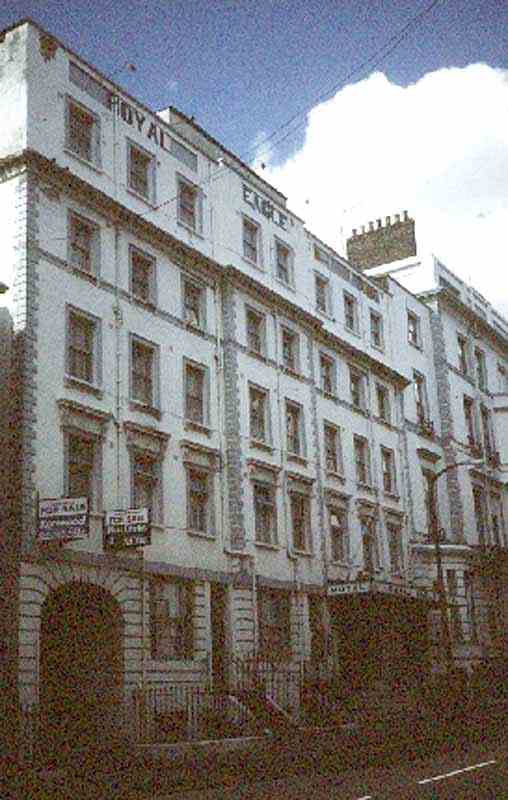
The Kiss at the Tate Gallery in London.
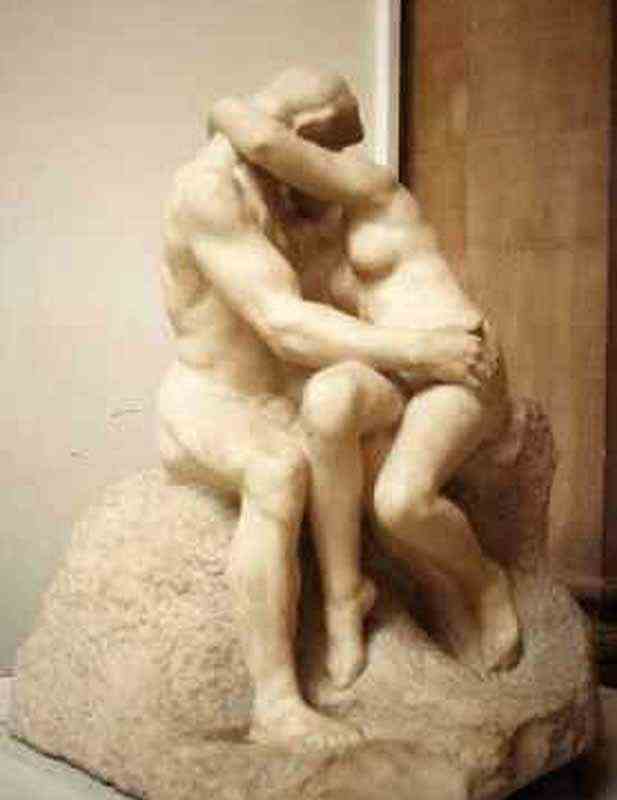
Fortnum & Mason's store in Oxford Street London.
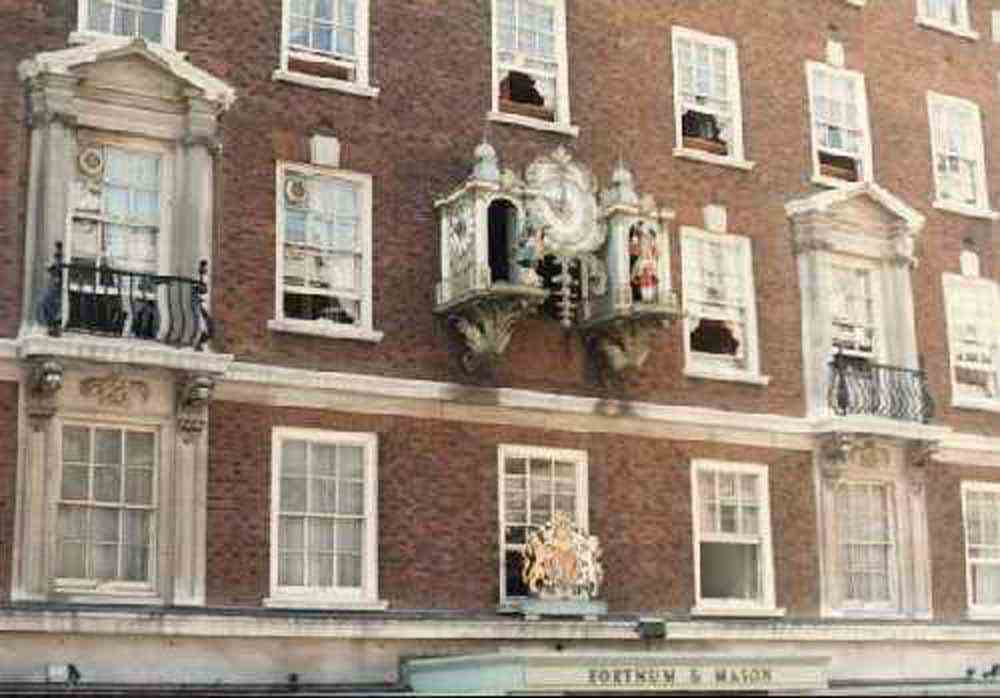
Kew Gardens, London.
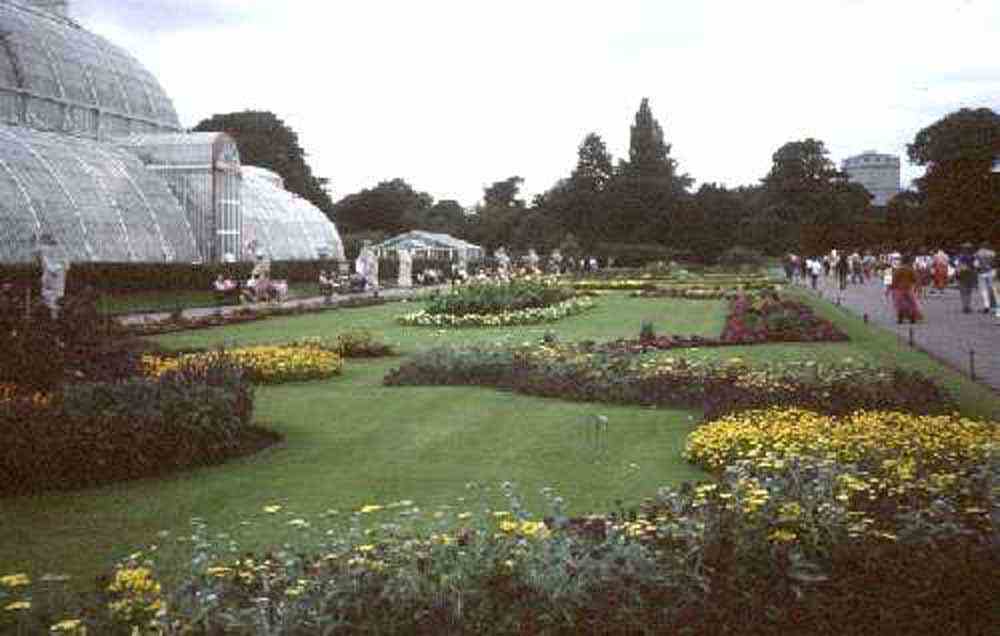
The Pagoda in Kew Gardens.
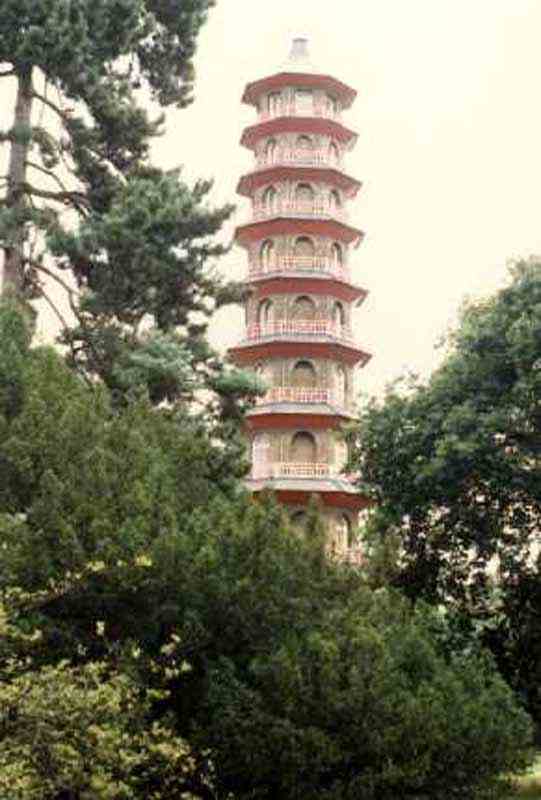
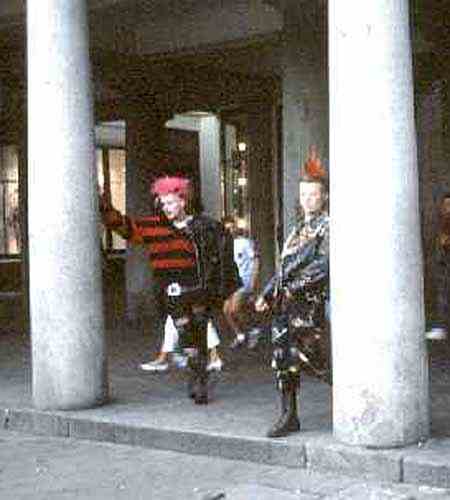
The Amateur Radio room at the Science Museum

The Tower of London which William the Conqueror began to construct in 1078.
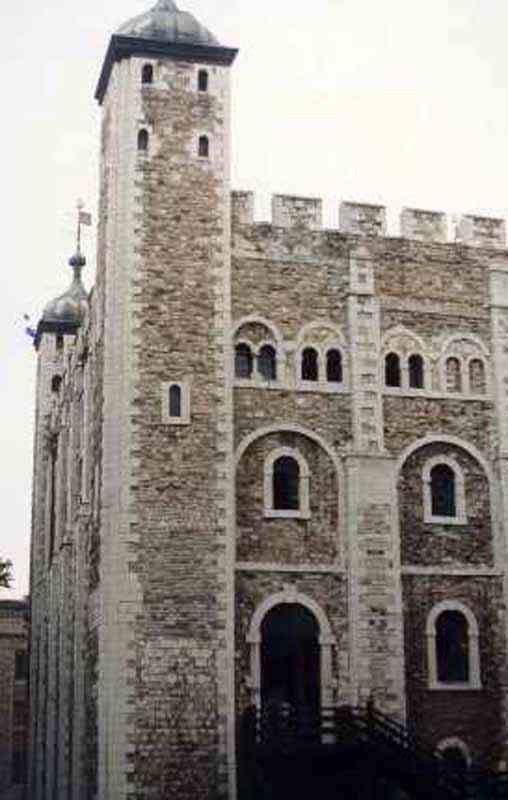
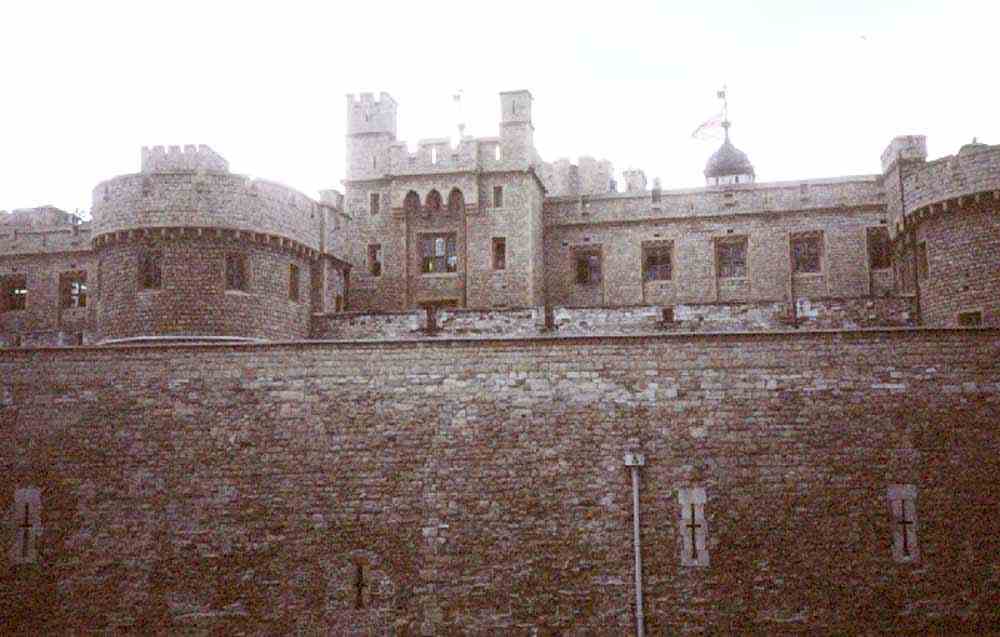
A politically correct raven at the Tower of London.

The Tower Bridge as seen from the grounds of the Tower of London.
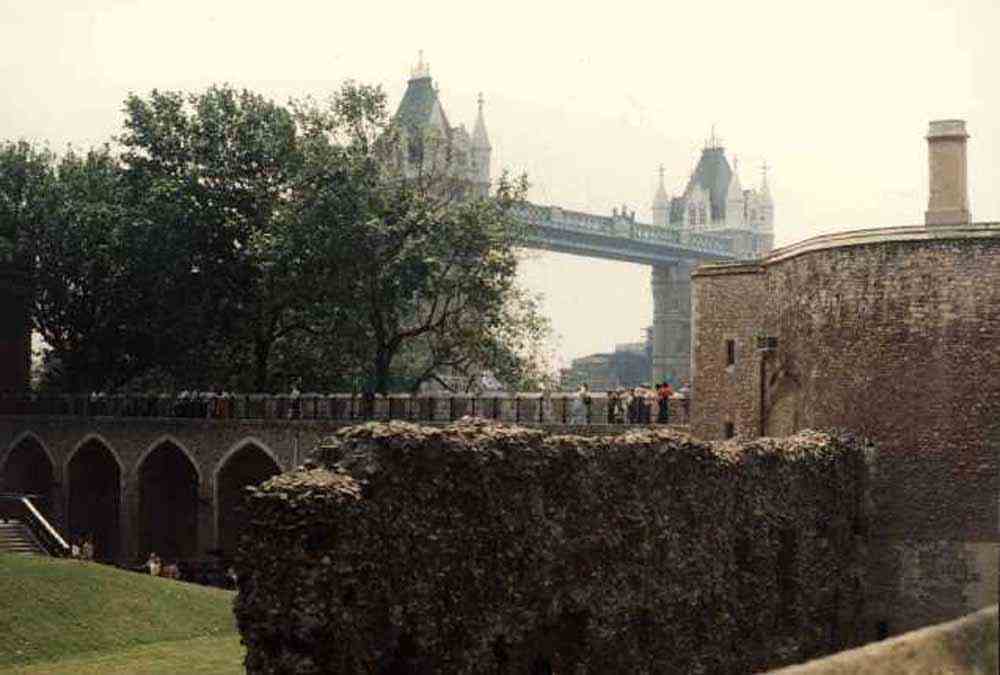
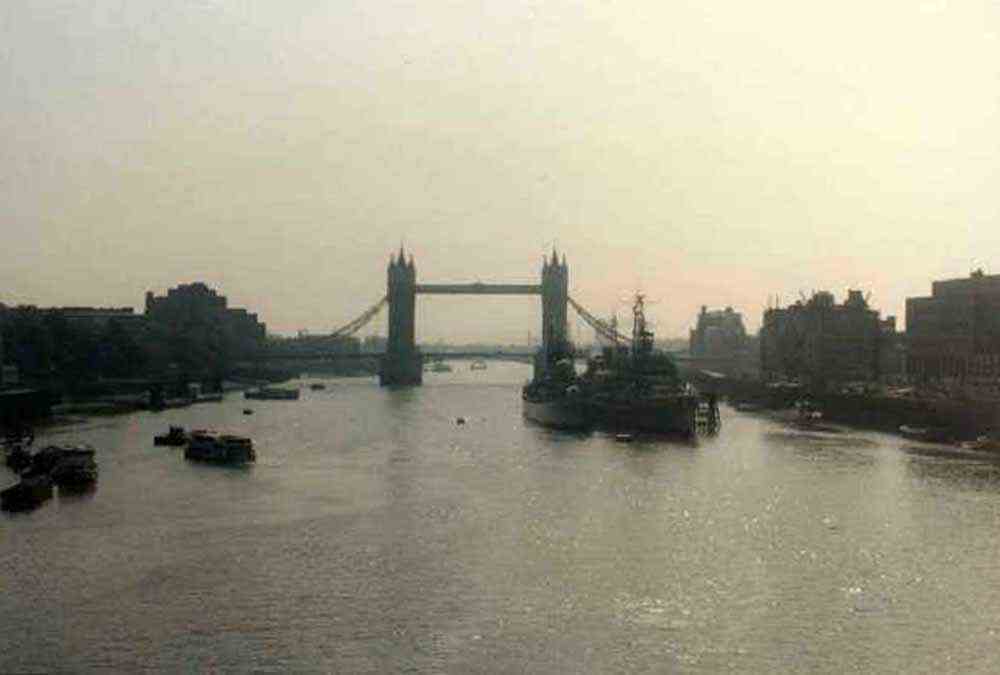
Buck House
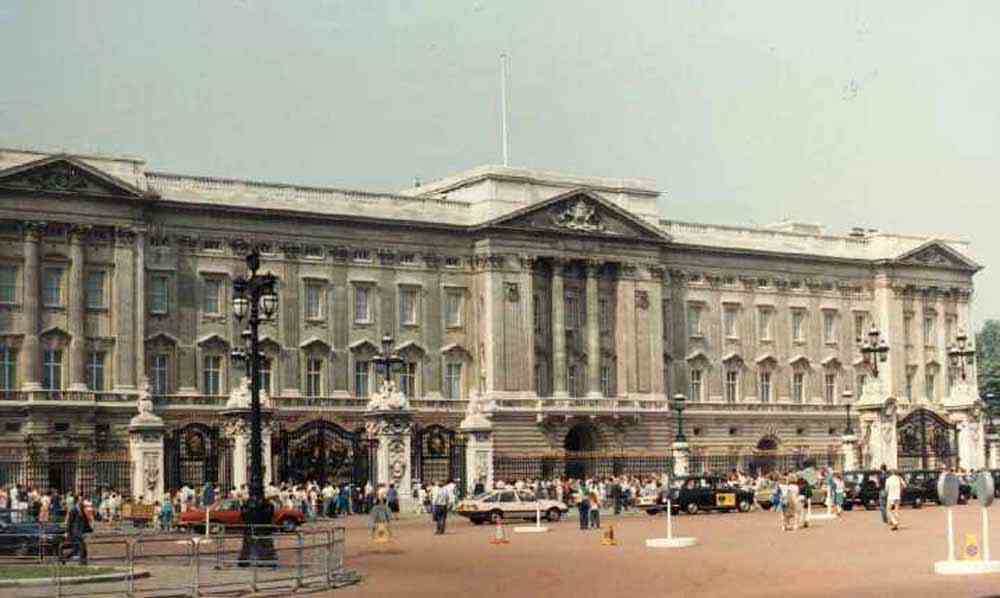
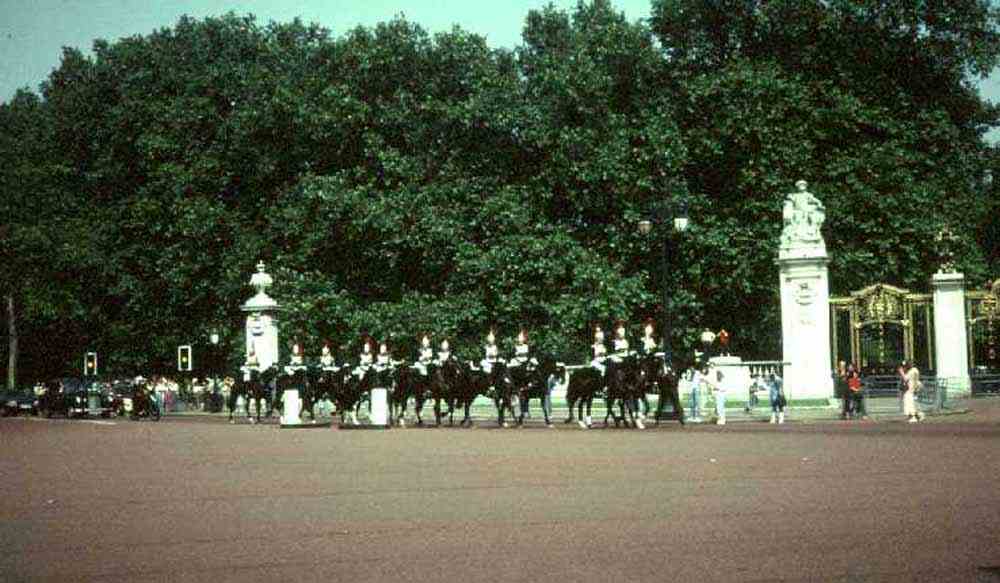
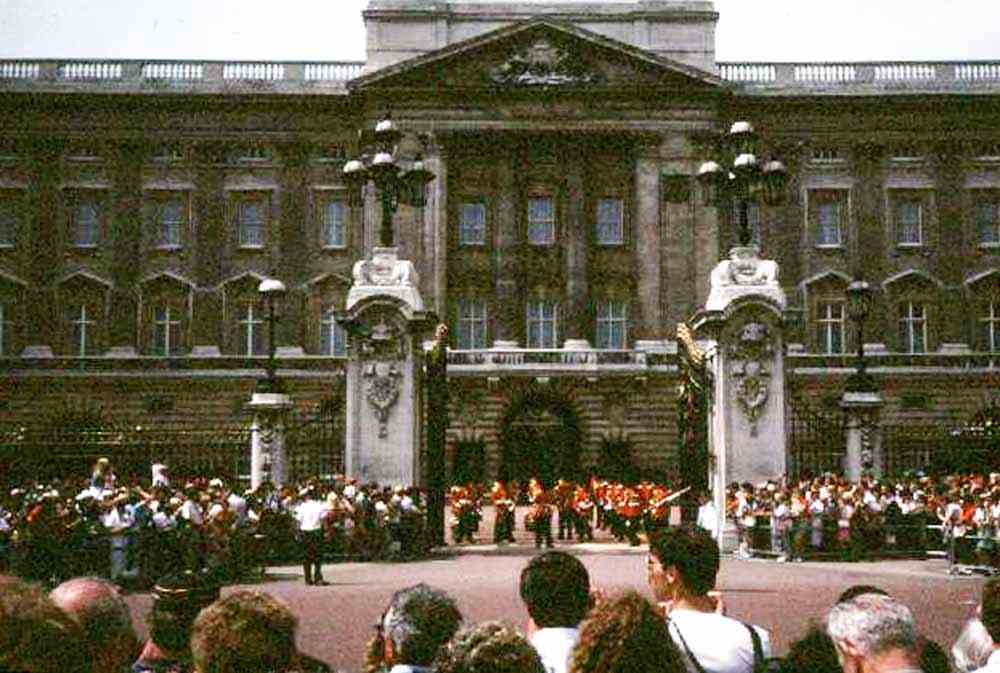
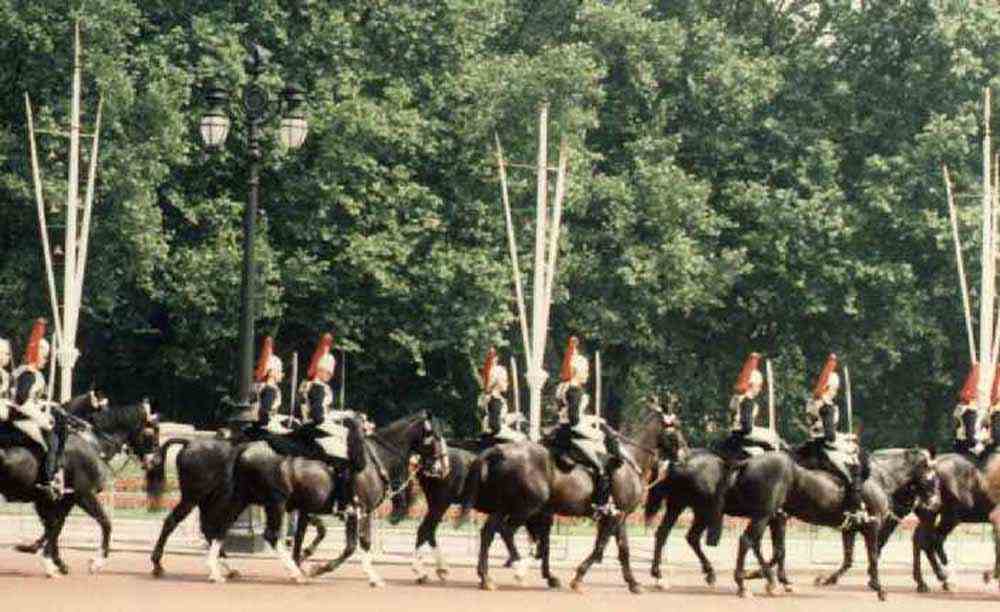
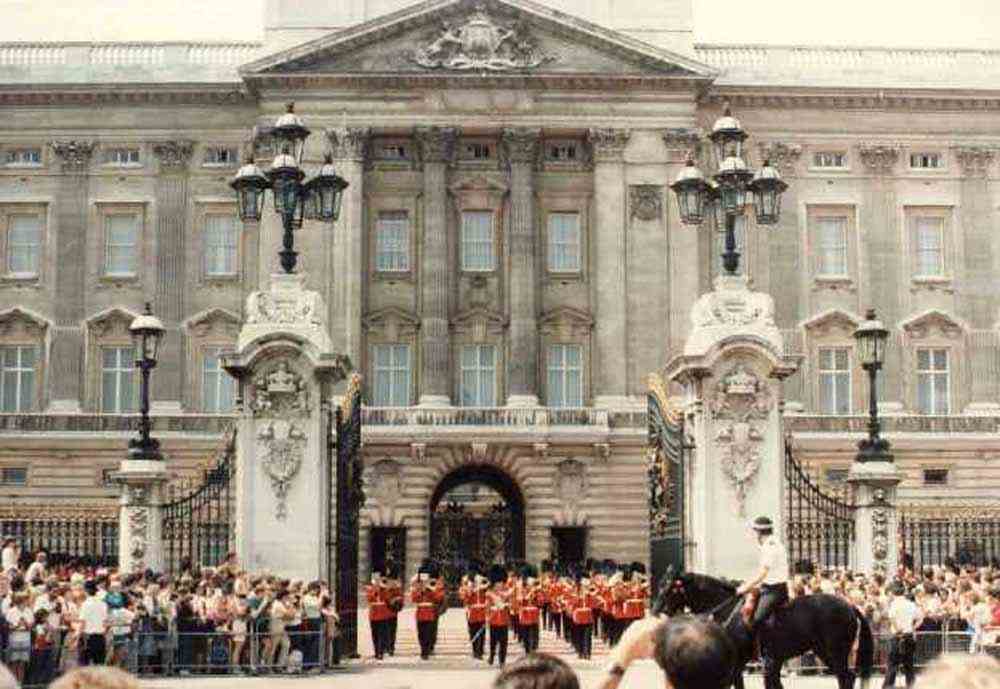
Big Ben at the British Houses of Parliament.

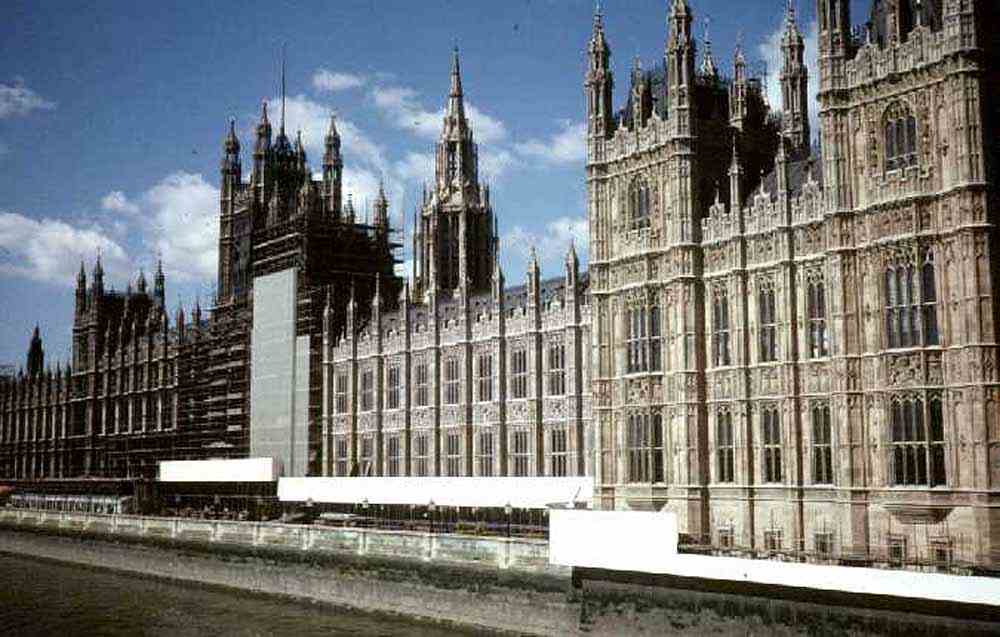
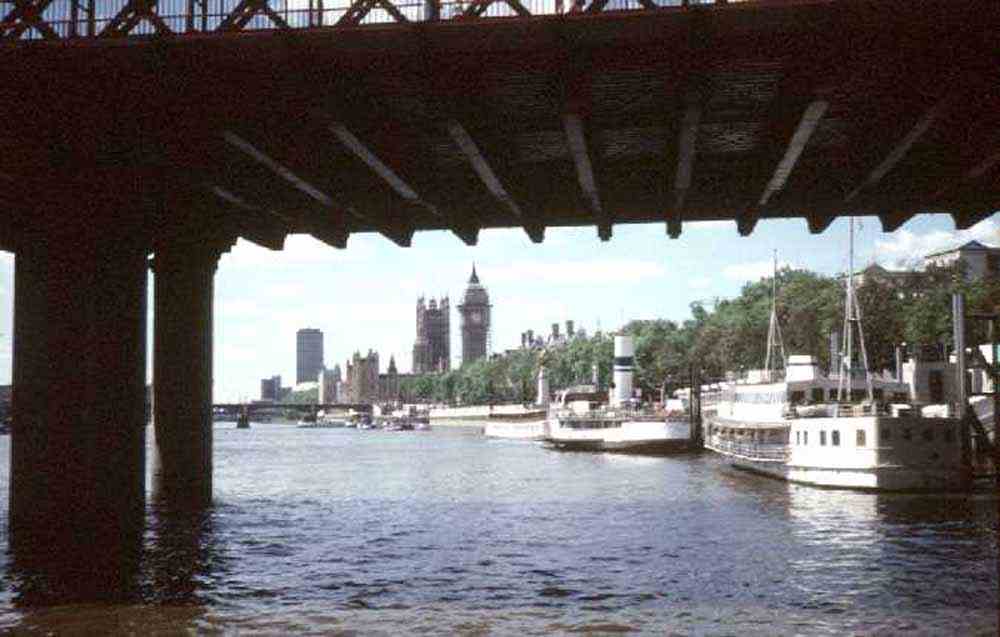
Mummified cats at the British Museum, London.
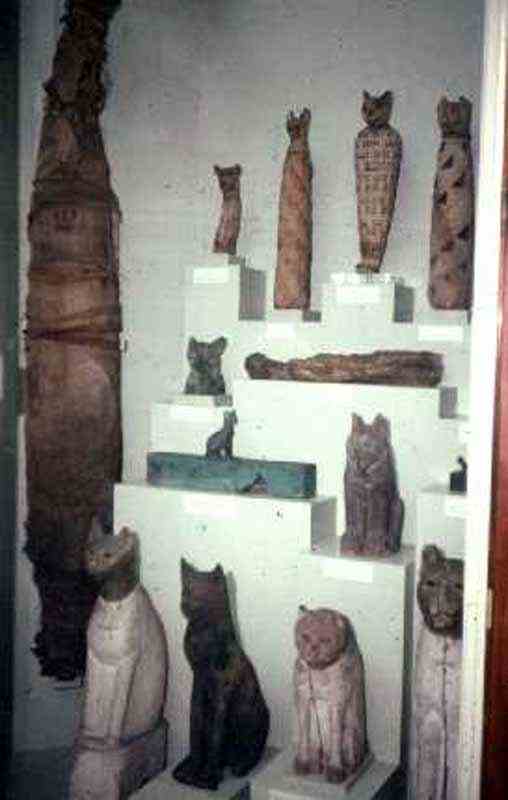
The Rosetta Stone. Discovered in 1799 it had the same message in 3 different languages (Greek, Egyptian Demotic
and Egyptian Hieroglyphics) and as such was the key to unlocking the mystery of Egyptian hieroglyphics by the French
linguist, Champolion.
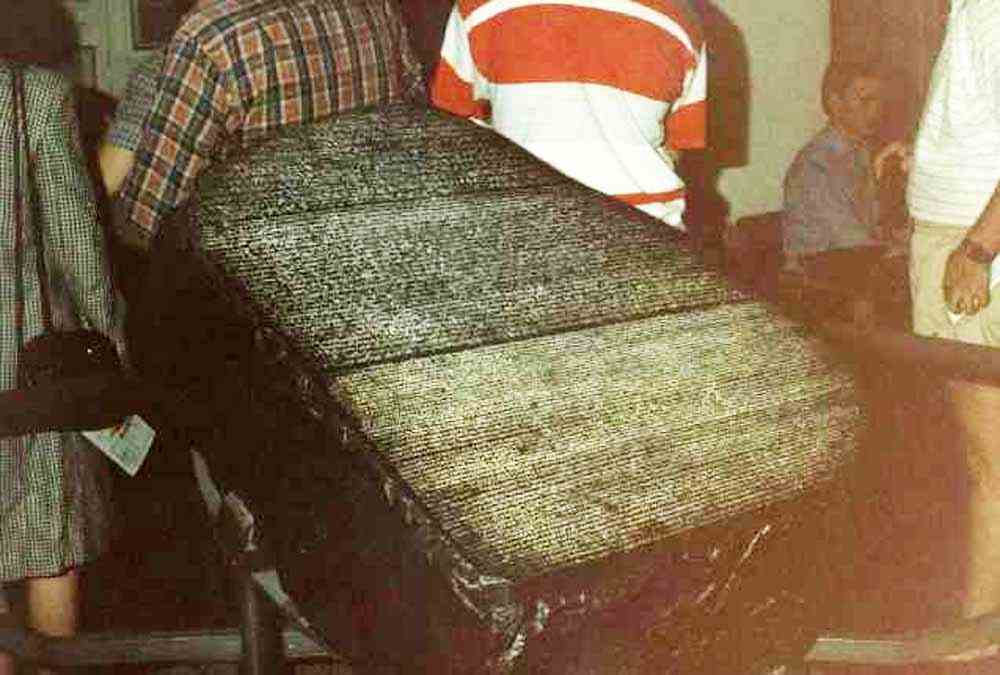

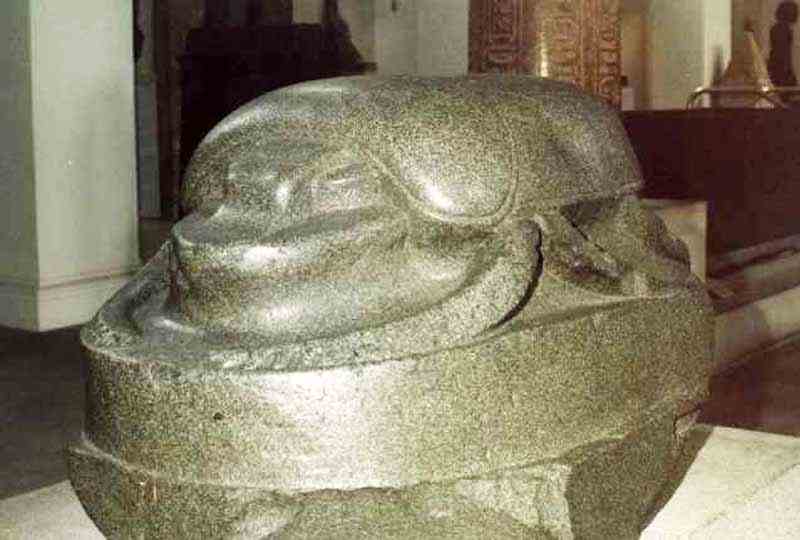
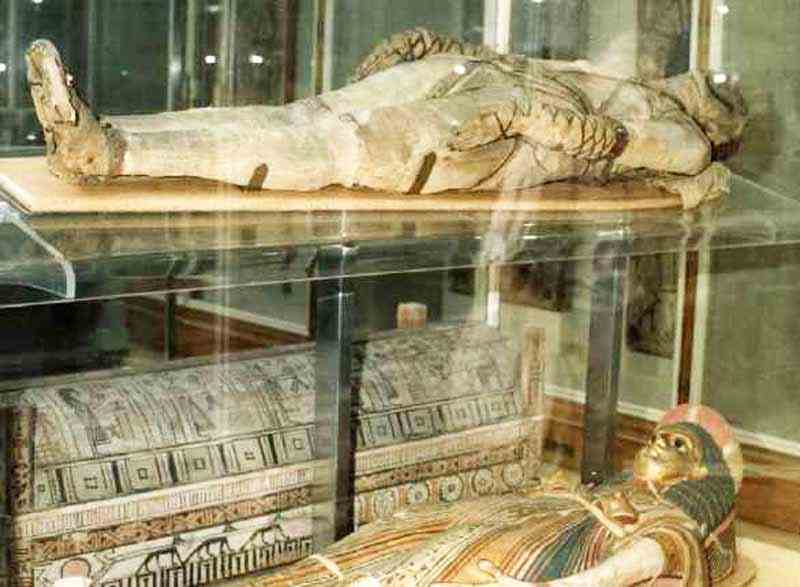
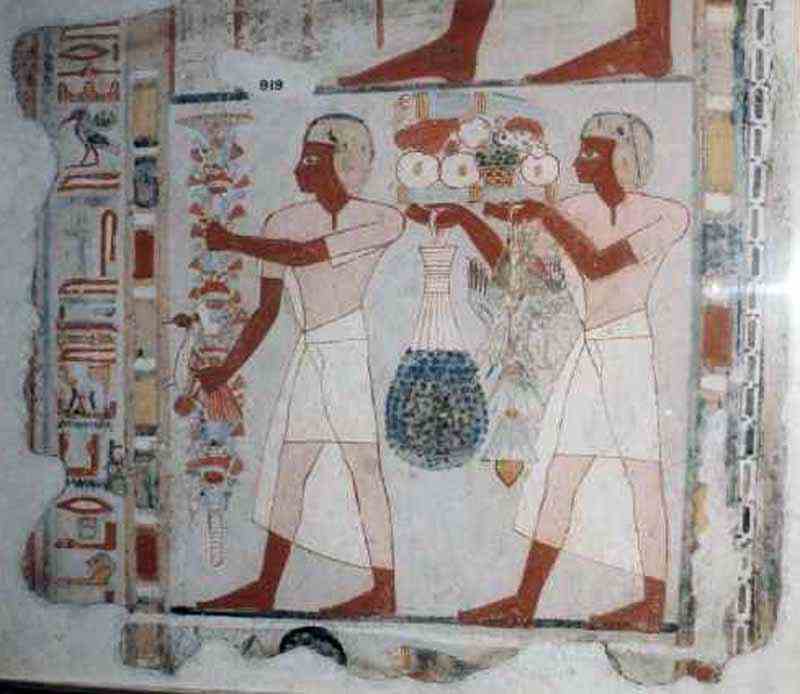
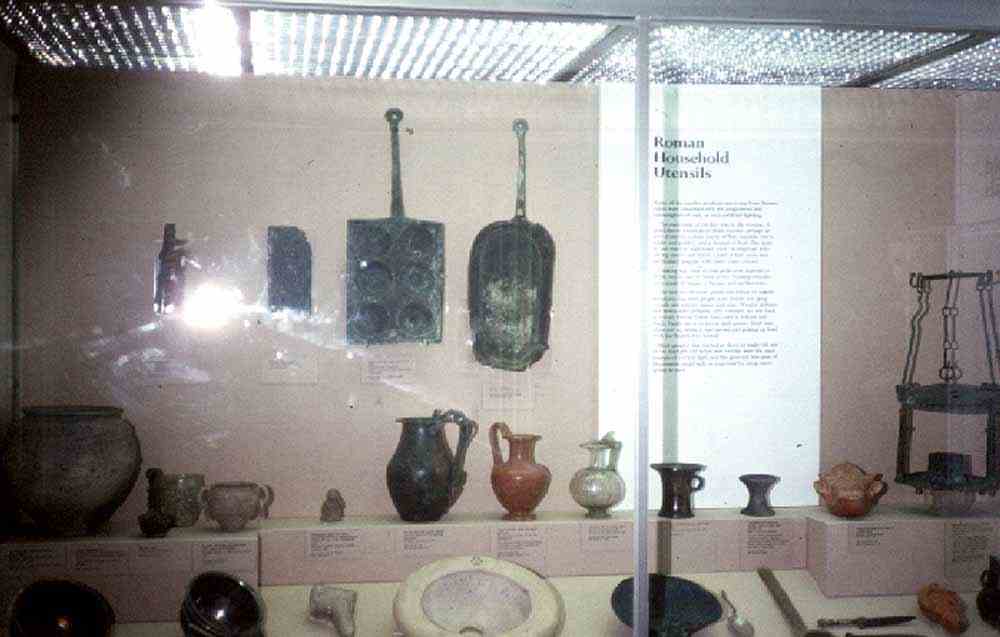
Greenwich
Each foot in a different one of Earth's hemispheres at the observatory at Greenwich.
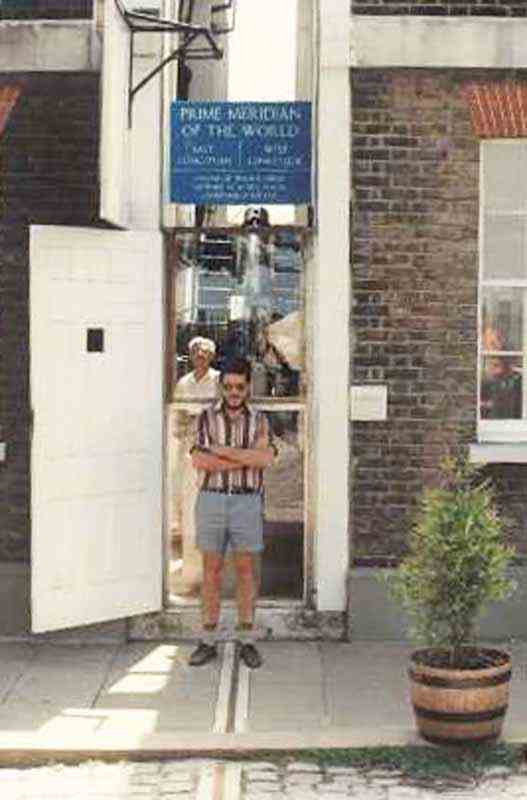
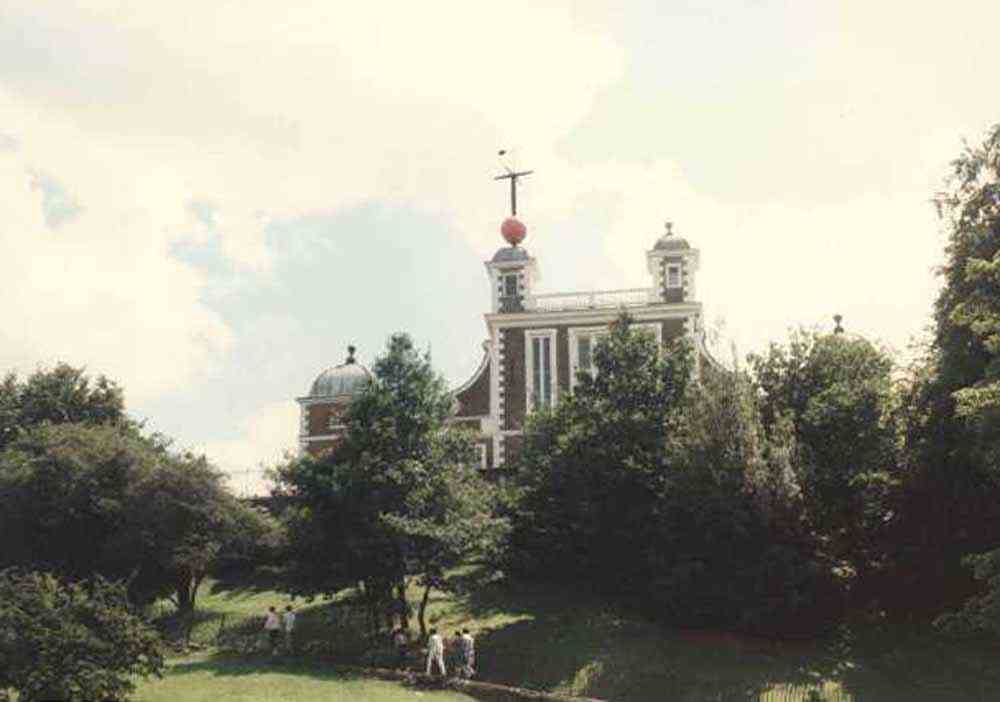
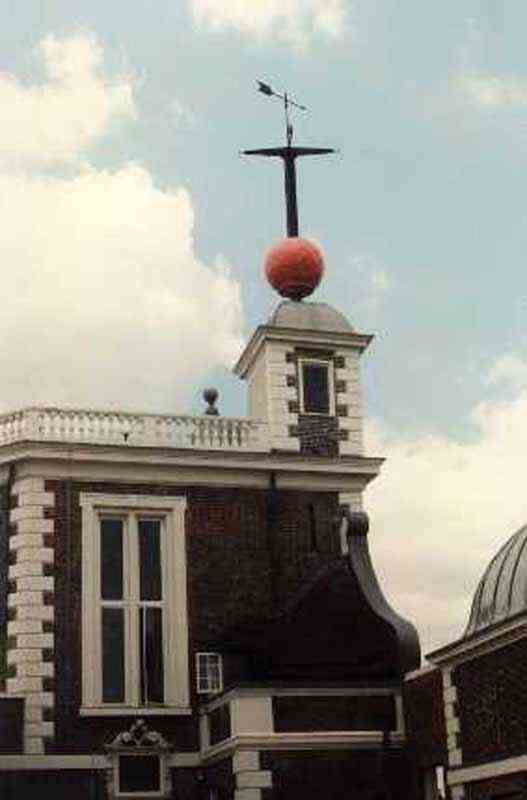
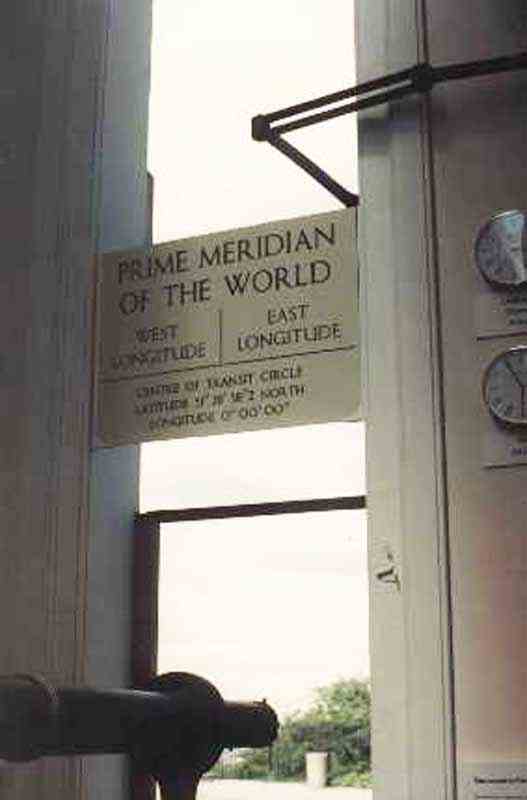
The Cutty Sark at the Maritime Museum at Greenwich.
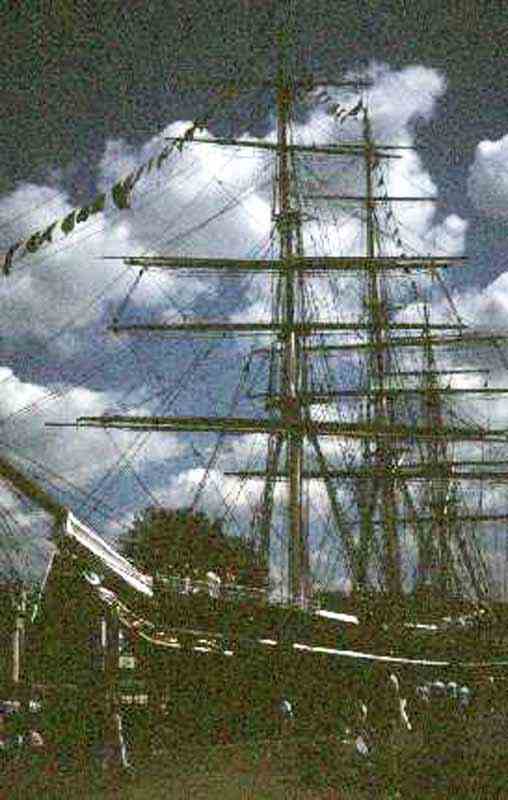
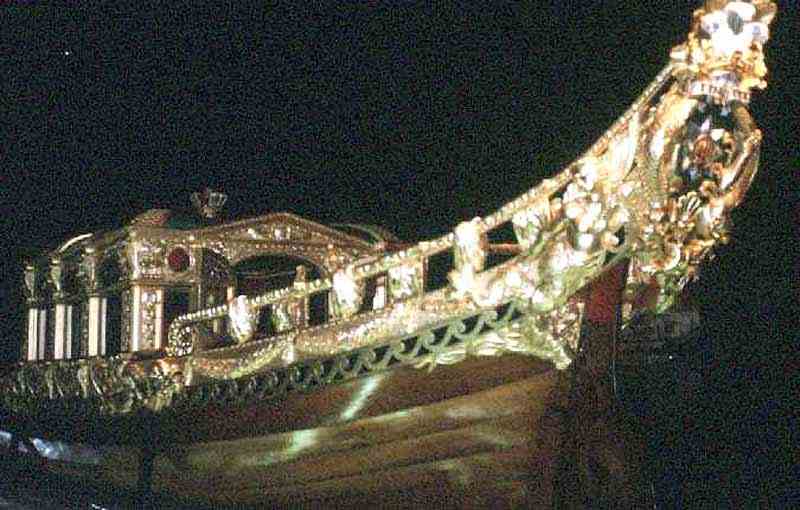
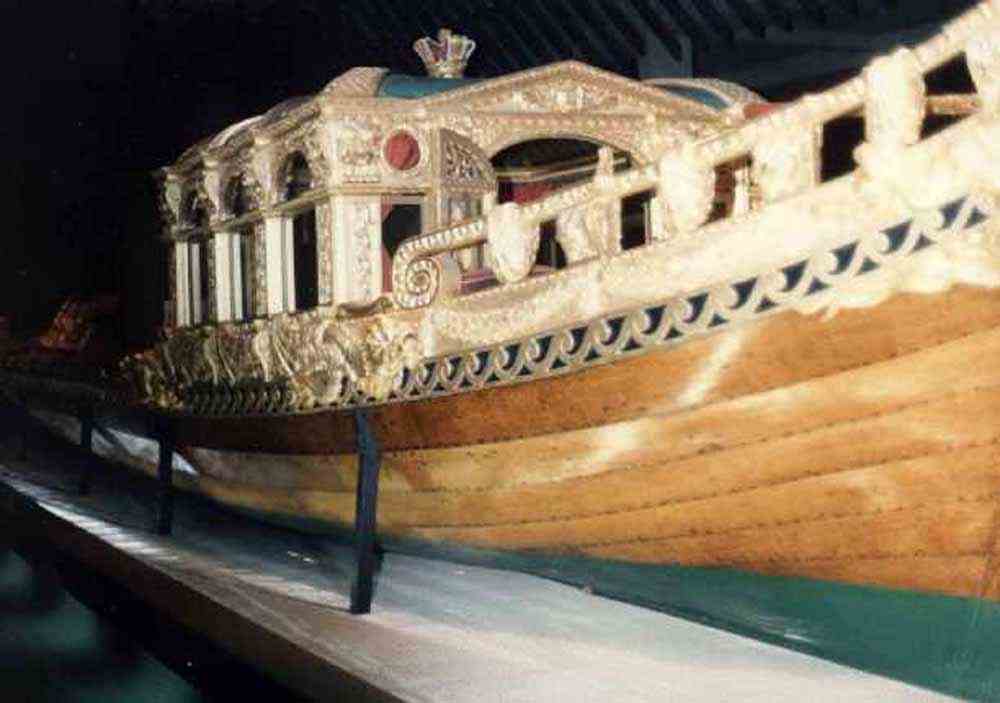
Leaving Dover on the ferry Reine Astrid for the port of Ostend in Belgium
at the start of my 32-day Western Europe tour.
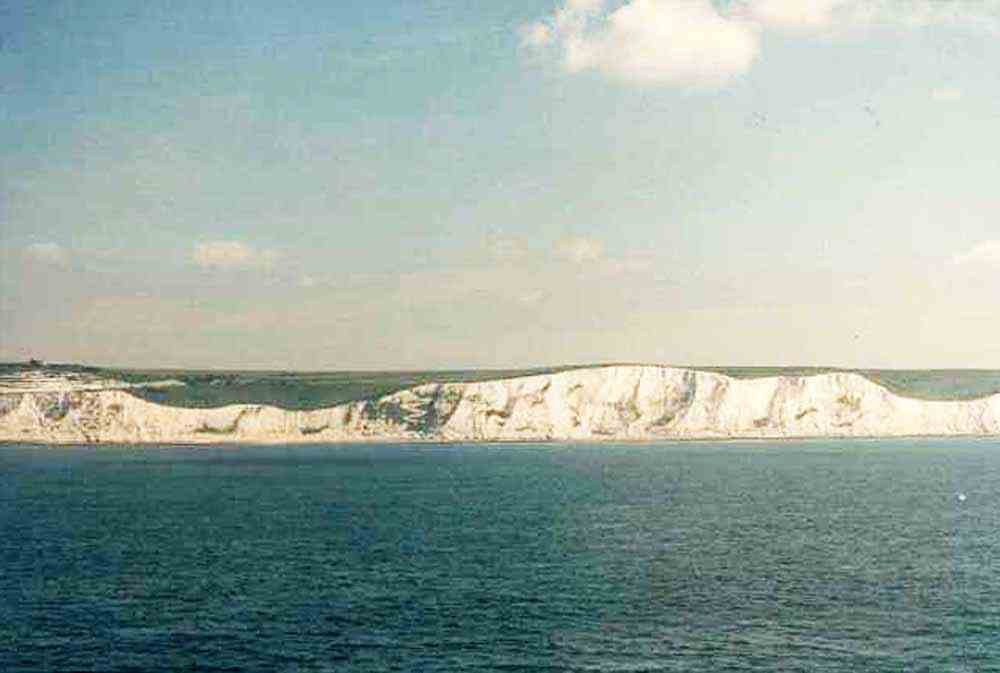
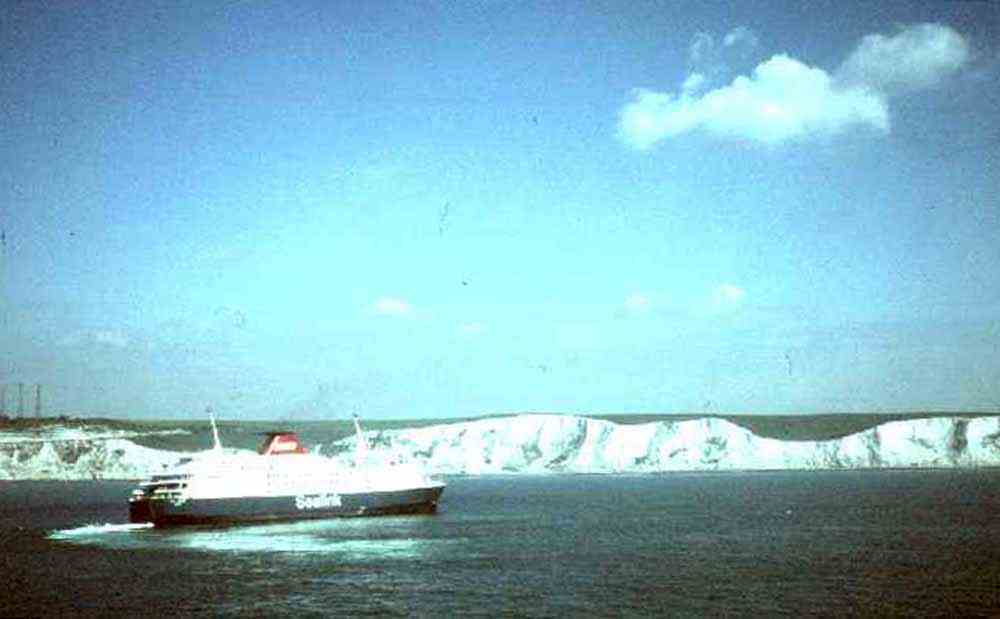
After the Western Europe tour, I returned to London Ann went on a week-long tour of England, Scotland and Wales.
Oxford
A wet day in Oxford.
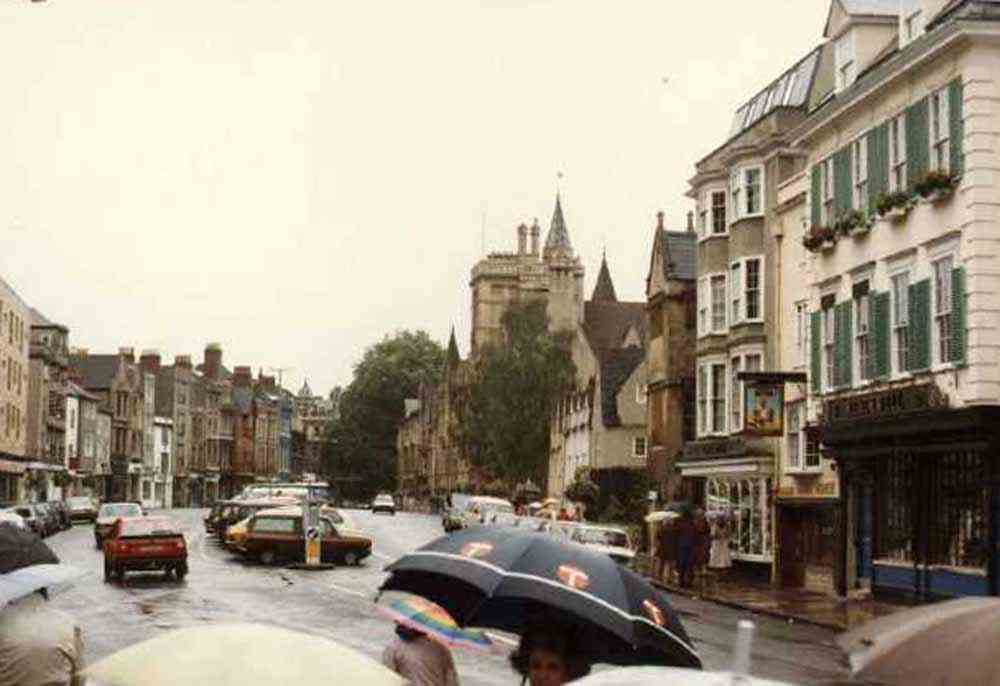
Blenheim Palace, one of the largest palaces in England was a gift to John Churchill from Queen Anne and Parliament
as a reward for his role in defeating Louis XIV.
Winston Churchill was born here.
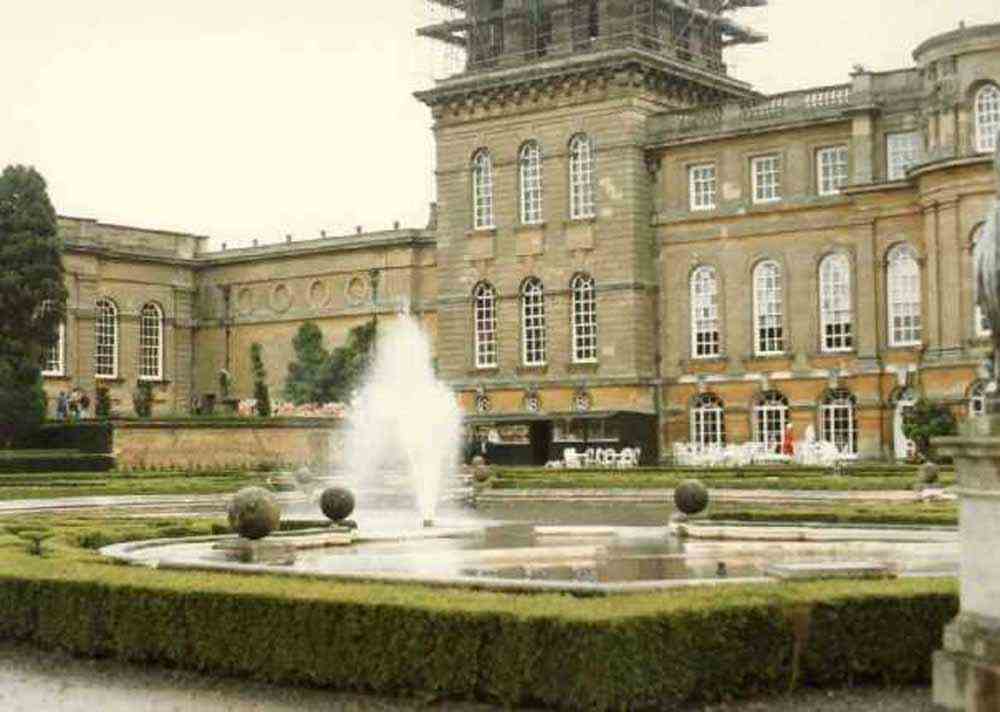
Stratford on Avon
One of 3 theatres at Stratford.
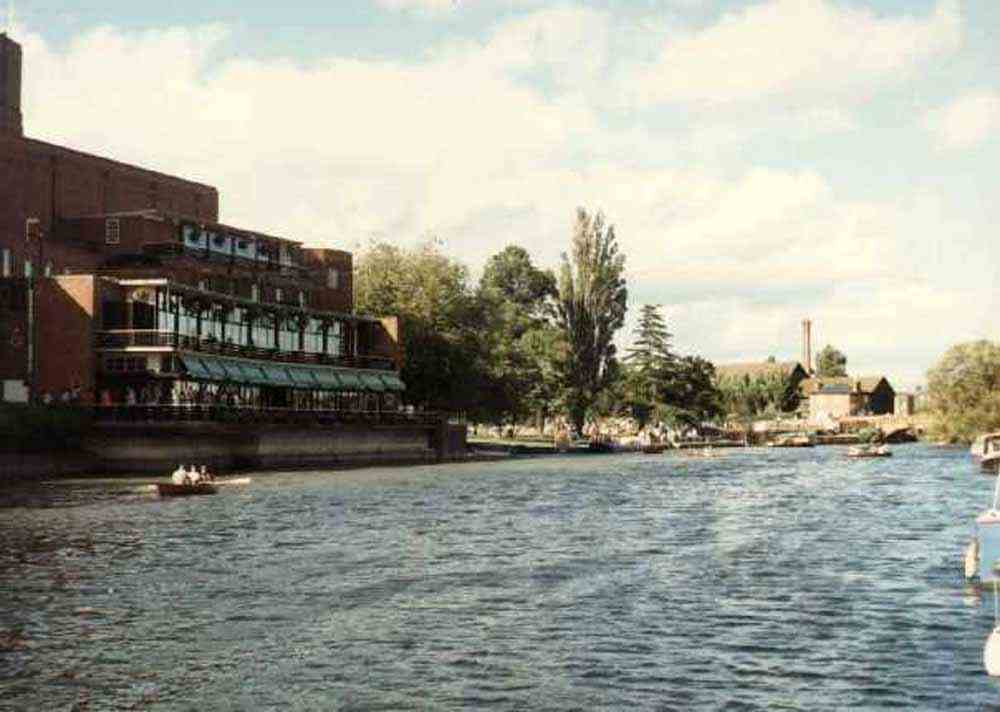
Shakespeare's birth place.
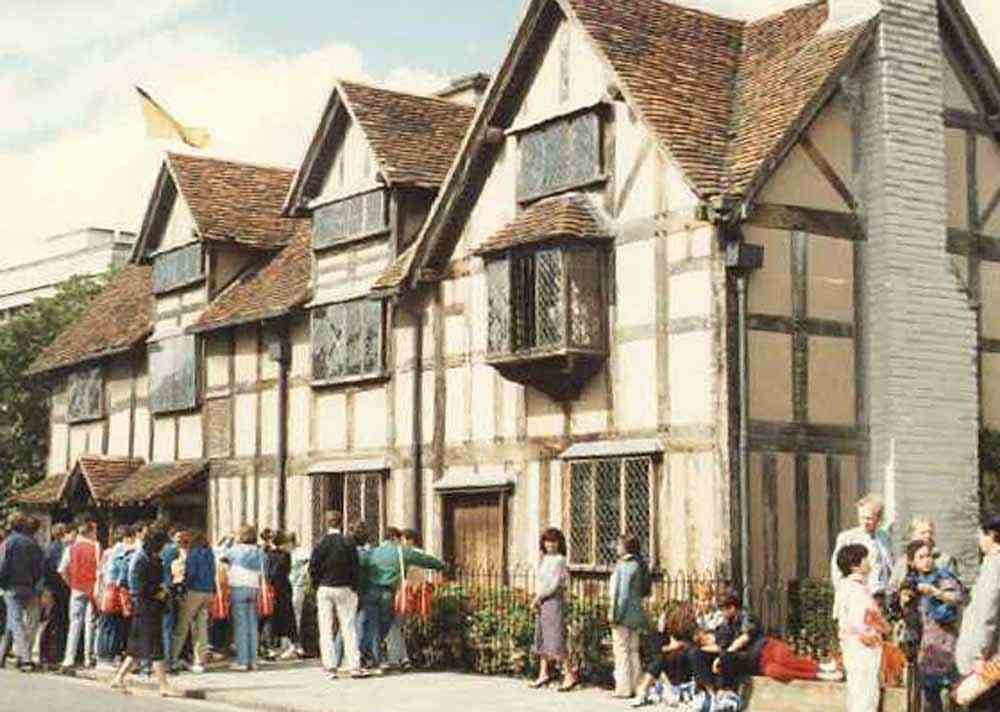
Anne Hathaway's cottage - her family cottage.
Eight years his senior, she married Shakespeare in 1582 bearing him 3 children.

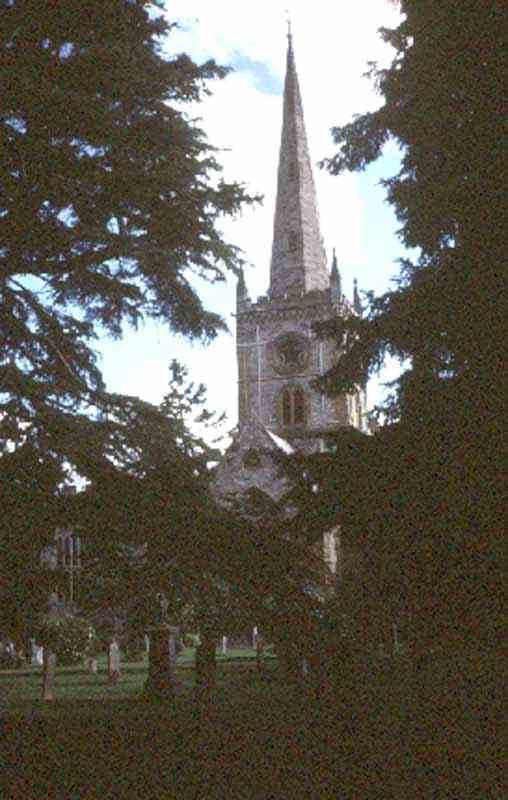
Coventry
The importance of Coventry as an armaments centre made it a priority target during the Second World War. It was the air raid on Coventry on the night of the 14th November 1940 that destroyed the medieval Cathedral of the city and 568 of its citizens.
A new modern cathedral was built adjacent to these ruins.
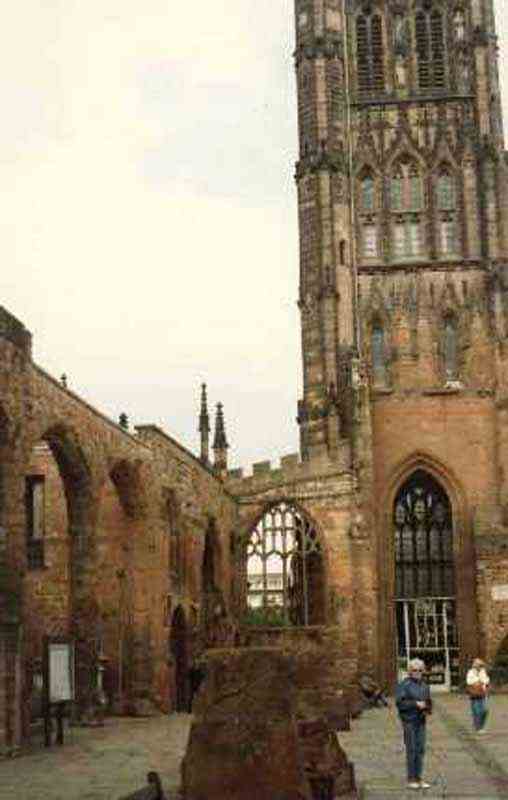
Lady Godiva's statue.
An Anglo-Saxon gentlewoman, patron of the arts, equestrienne, and tax protester, etc. All the historians say that she "flourished, circa 1040 - 1080 A.D."
Leofric, Earl of Mercia, and husband of Lady Godiva was given responsibility for certain financial matters of Coventry.
Most of the residents were having a hard time, in light of the fact that Leofric, in his new-found megalomaniacal grand-public-works mode,
had been taxing everything he could think of, even including a levy on manure.
The ancient Greeks, Leofric pointed out, and Romans as well, viewed the nude human body as one of the highest expressions of the perfection of Nature.
To present a well formed nude body as an object of great beauty, even art, would be to offer a lesson of inestimable value to the simple peasants of Coventry,
whose experiences and perceptions had never been enlightened to appreciate such perfection.
Lady Godiva could see the plight of the over taxed residents.
If Lady Godiva truly believed in the crusade she was promoting, then she should lead it herself.
After much nagging Leofric proclaimed that if Lady Godiva would ride her horse naked through the crowded market-place of Coventry,
in the full light of mid-day, as an example of the perfection of God's work and as an expression of the highest possible aesthetic
then he would reduce taxes on the populace, lifting from them the burden Godiva perceived, and erasing from himself any further doubt
he might harbor of the sincerity of Godiva's convictions.
To Leofric's absolute surprise, she agreed, once she had ensured that she actually had his "permission" to do so.
She was not alone, but was accompanied by two female aides also on horseback, but normally clothed; one rode on each side and slightly to the rear.
She sat straight and properly in the saddle with a look of composure on her face; relaxed, confident, unashamed.
Her hair was done in two large braids which were curled snugly at the back of her head, one on each side.
People looked at her and saw that she was not merely naked, or nude; rather she was in a higher state of presentation -- being a correct and elevated quality
of her composure, and resulting also from the people's appraisal, appreciation, and consideration beyond simple voyeurism.

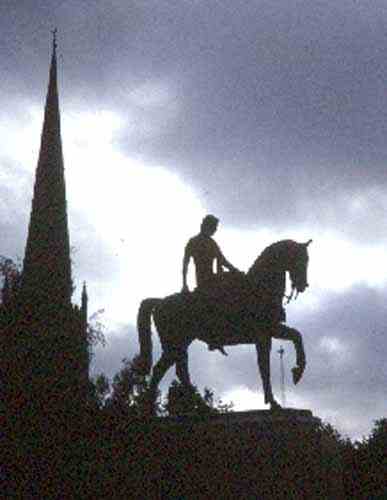
York
York Minster cathedral which took over 250 years to build between 1220 and 1480.
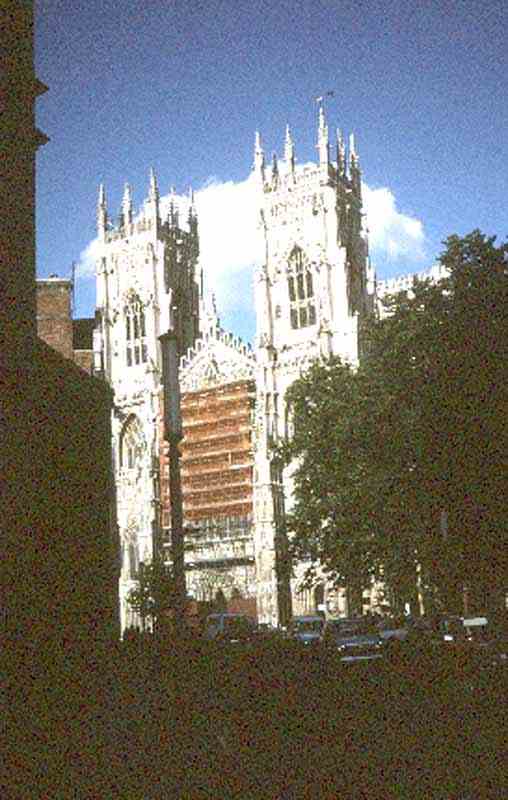
Harewood House
The Yorkshire home of the Earl and Countess of Harewood, was designed by John Carr and completed in 1772
with exquisite interiors by Robert Adam.
It is fitted out with numerous pieces of Chippendale furniture some of it like the curtain pelmets built in.

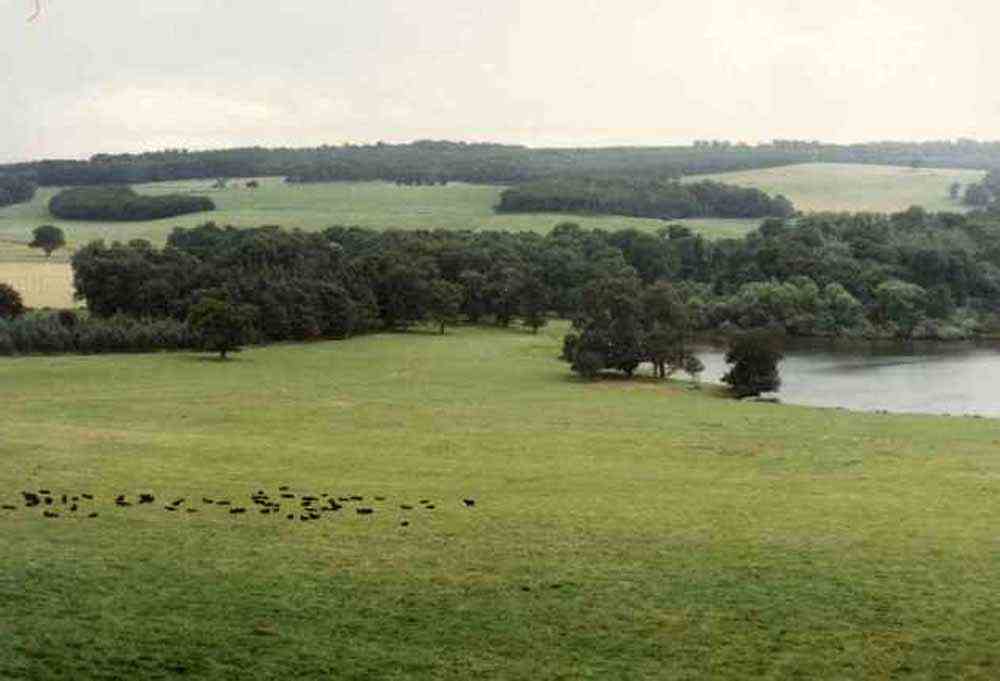
Durham

Edinburgh
Despite its official union with England in 1707, Scotland has continued to maintain an independent national identity.
The ceremonial Scots Guard at Edinburgh Castle.
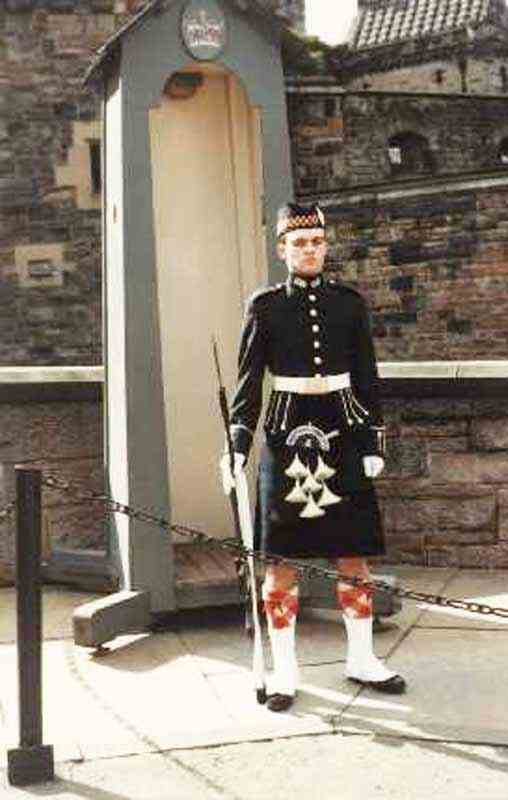
Edinburgh Castle overlooks the city.
The castle was the seat of Scottish kings.
It is a complex of buildings that has been altered many times by war and the demands of the military.
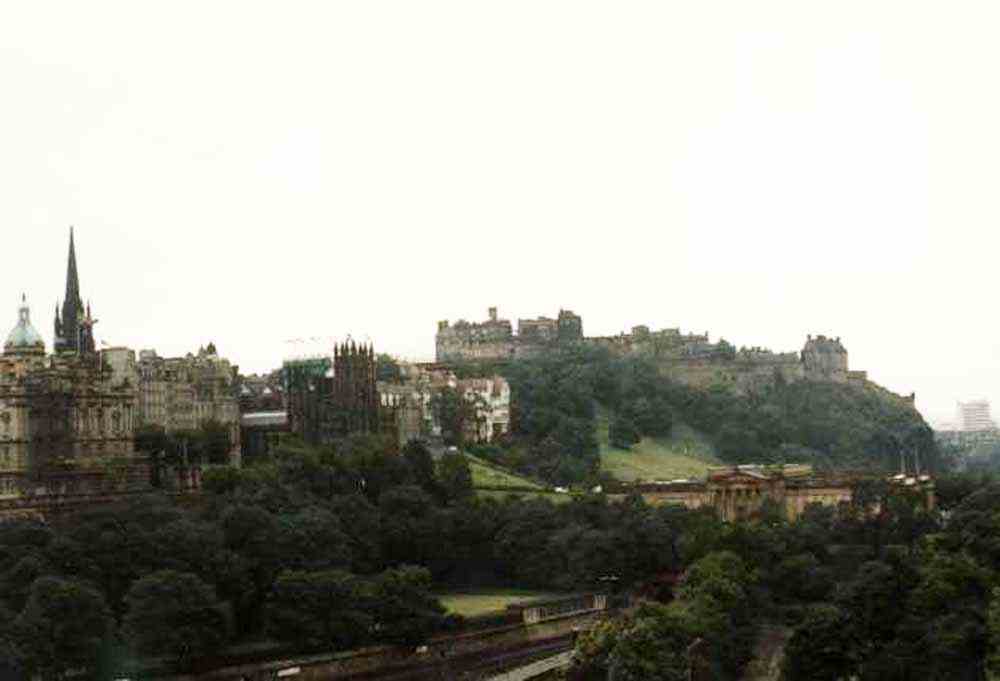
The smallest and oldest building on the castle site is St. Margaret's Chapel which was built in the 12th century.
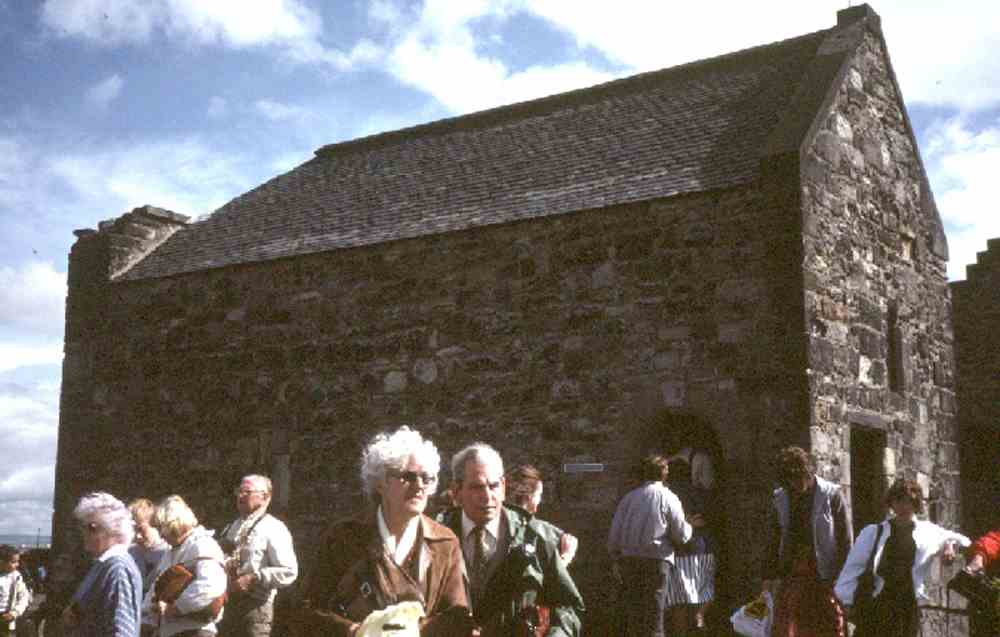
The forecourt of the castle where the Edinburgh tattoo is held is used as parking space for tour coaches in the daytime. The area where the tattoo is held is only the size of a couple of tennis courts.
We went to the tattoo on our second night in Edinburgh.
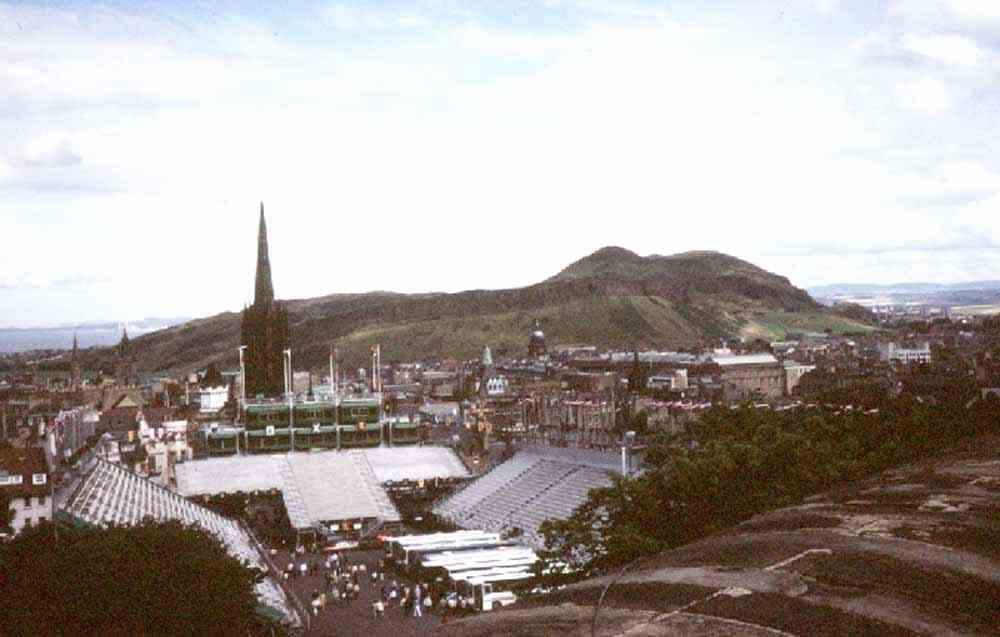
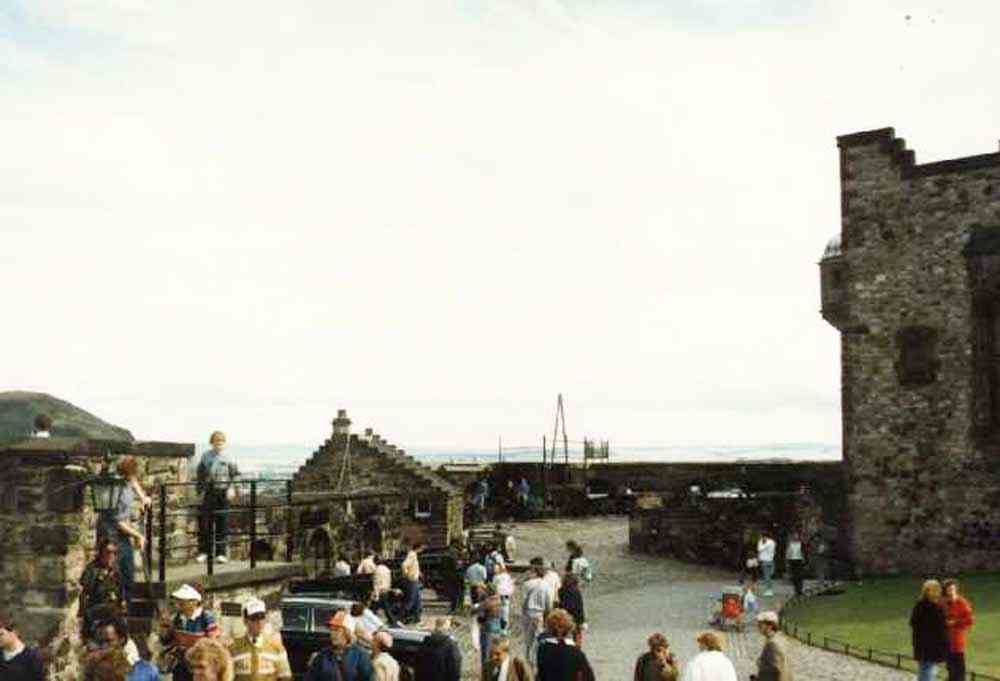
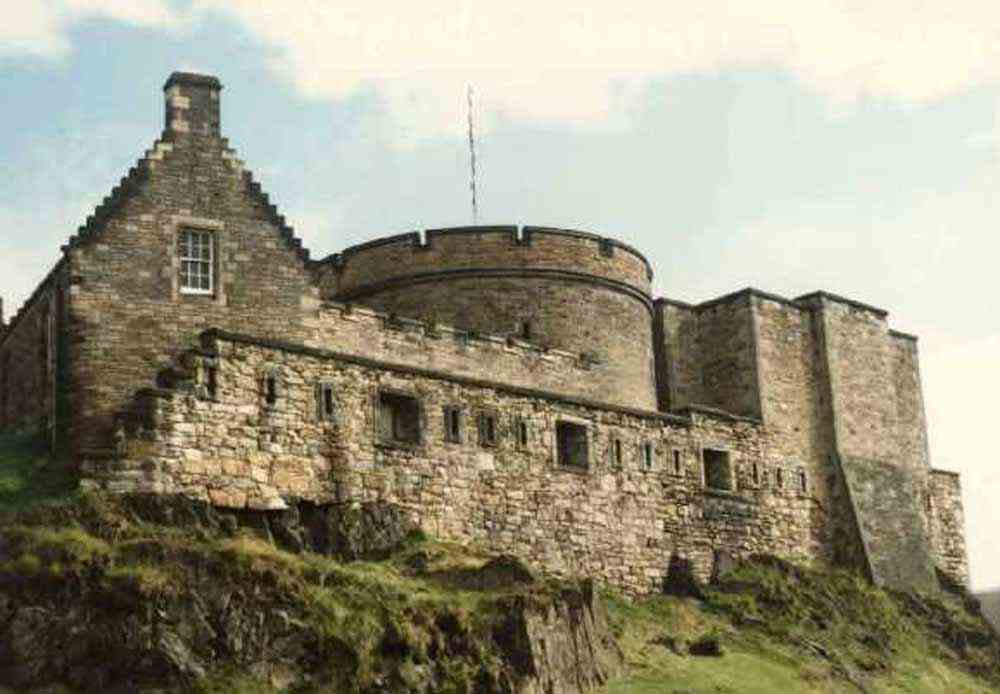
Holyrood Palace where Betty stays when she is in Edinburgh.
We had a tour inside and saw the room where David Rizzo, the secretary and rumoured lover of Mary Queen of Scots,
was murdered in 1565.
Darnley, Mary's husband was involved in the murder.
Then Darnley himself was murdered, presumably by Mary and her future husband, the Earl of Bothwell.
We did not see any of Betty's private apartments or staterooms on our tour.
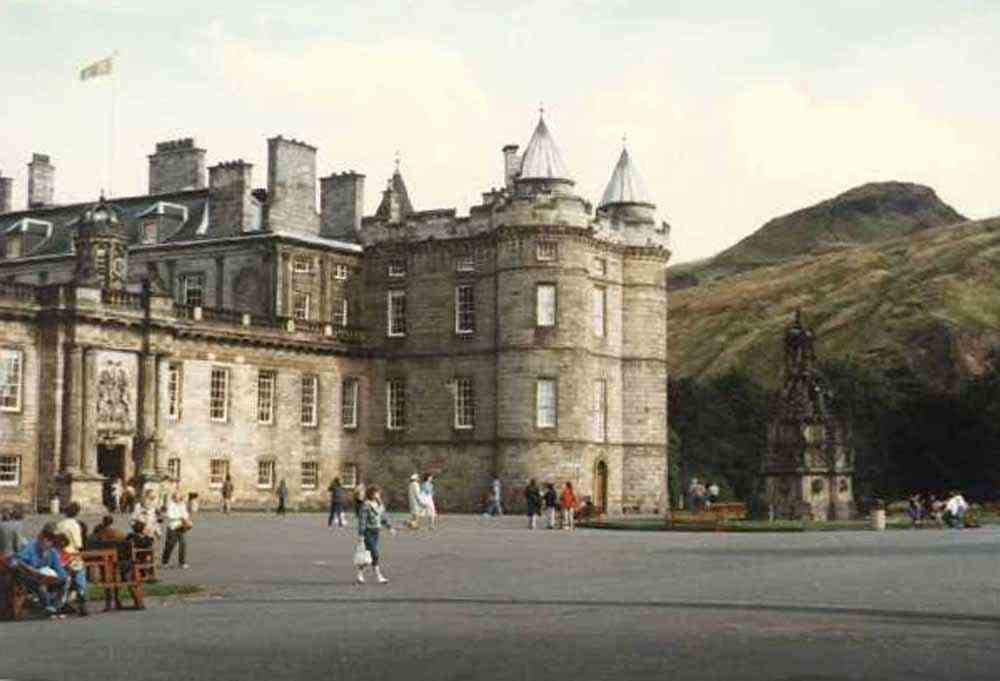

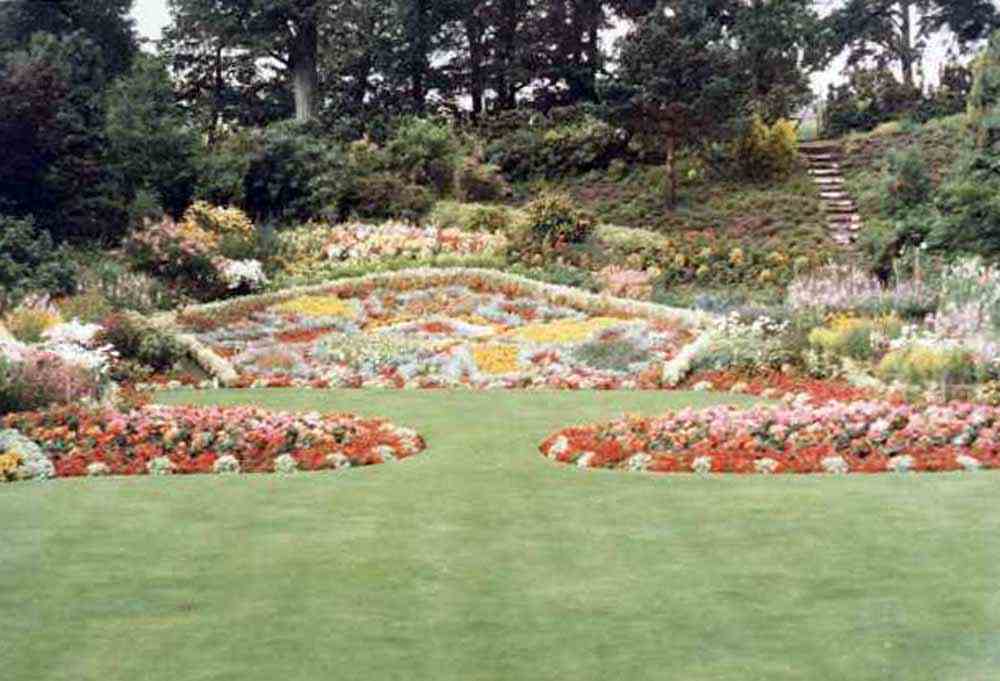
On our tour out of Edinburgh to Aberfoyle where we viewed the castle in the distance.
I was going to go to St. Andrews in the afternoon but the bus broke down on the morning tour not leaving enough time.
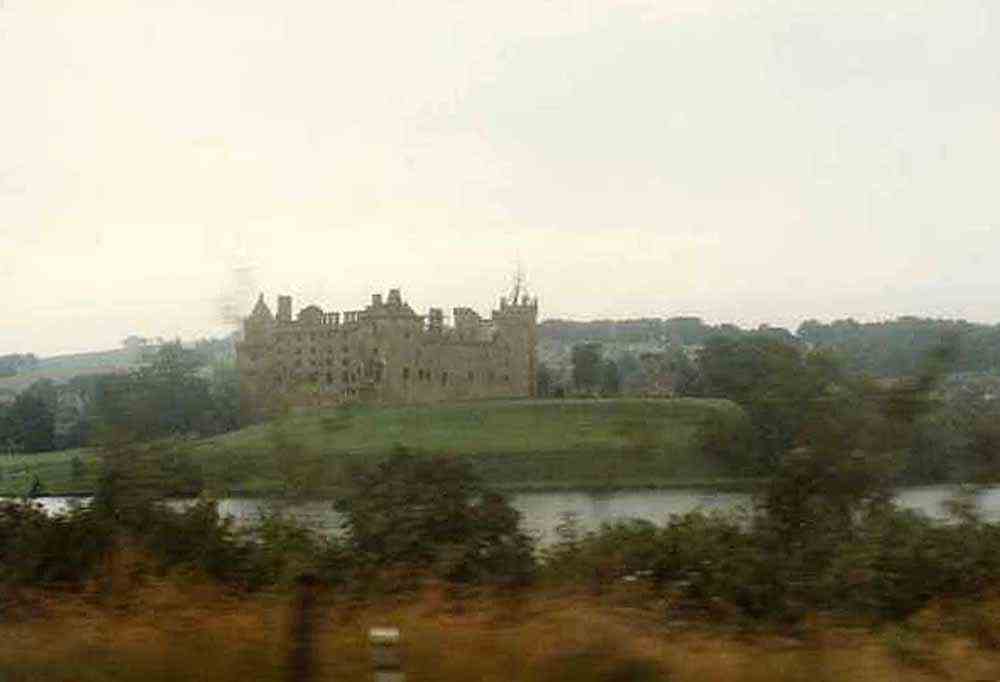
Stirling Castle
Mary Queen of Scots was crowned here.
Stirling has witnessed many of struggles of the Scots against the English.
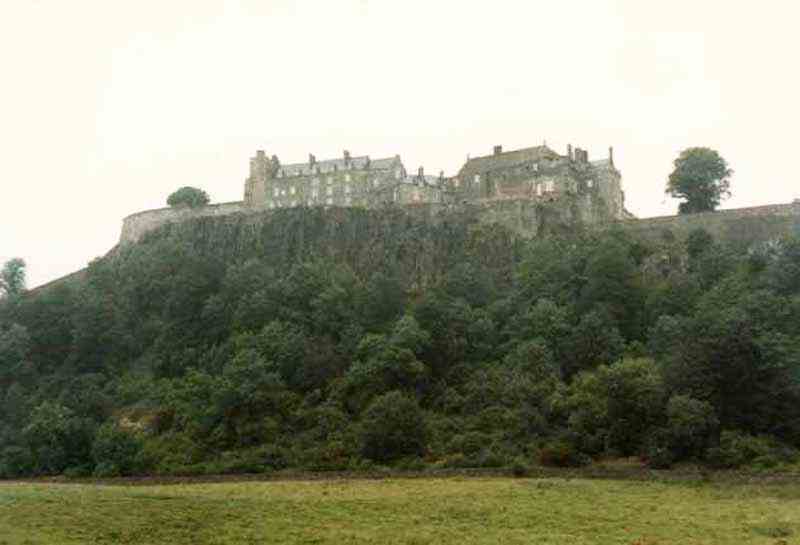
Heather on the moors.
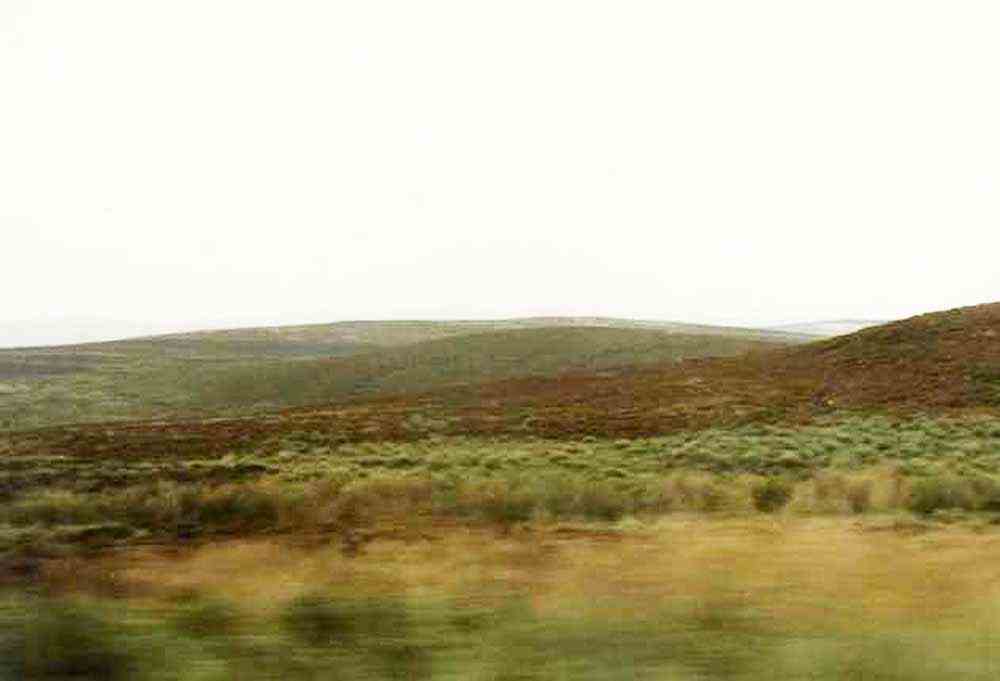
A loch near Edinburgh.
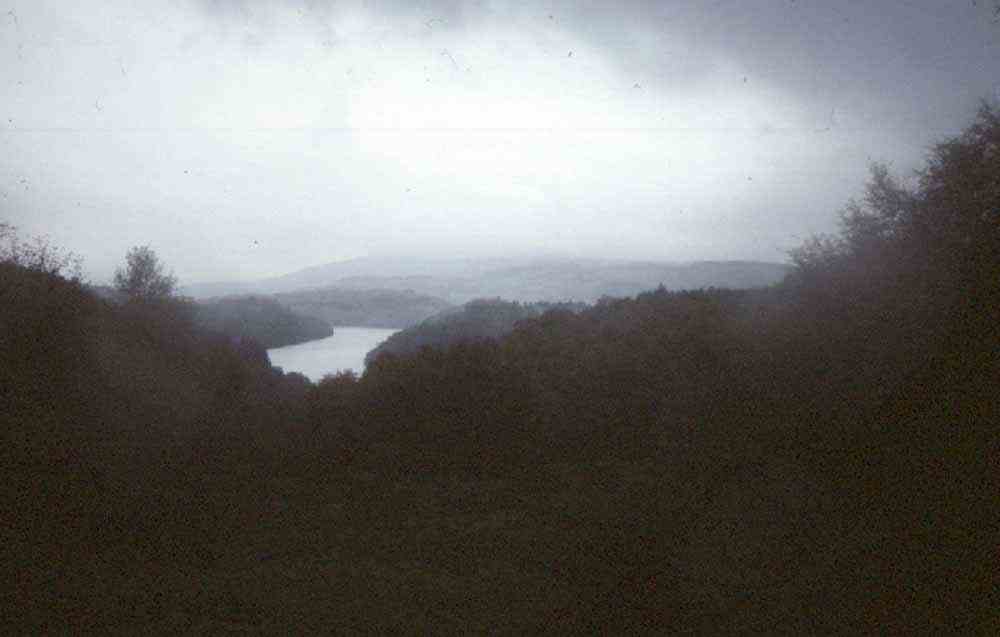
At Gretna Green just north of the English border.
In 1754, England passed a law that changed Gretna Green's destiny forever, making the village the destination of
thousands of "underage" couples who wanted to wed.
In England, if either party to a marriage was under 21, then they could not marry without parental consent.
This Act did not apply to Scotland, where you only needed to be 16 years old to marry,
as is the case today, with or without parental consent.
In Scotland, a couple had only to declare their intentions to be husband and wife in the presence of two witnesses,
and their word was law.
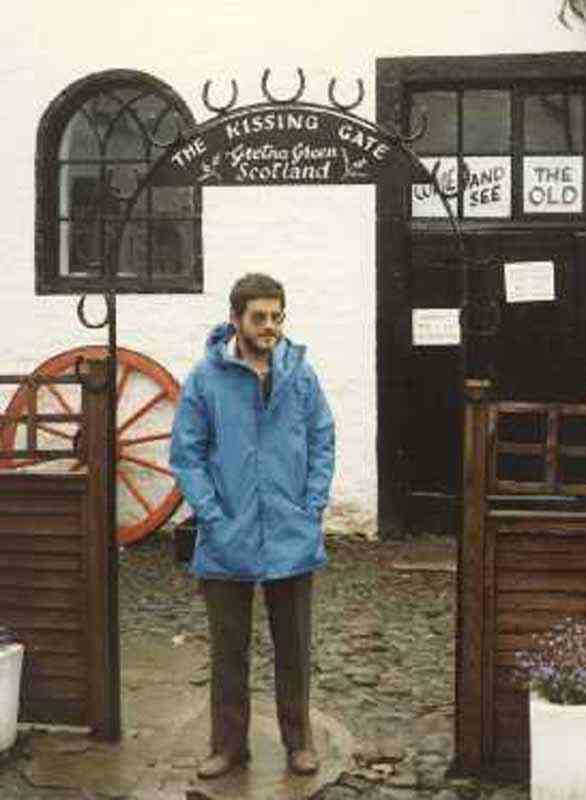
The Lakes District in north-west England.
The Ullswater Hotel at Glennriding overlooking Lake Ullswater.
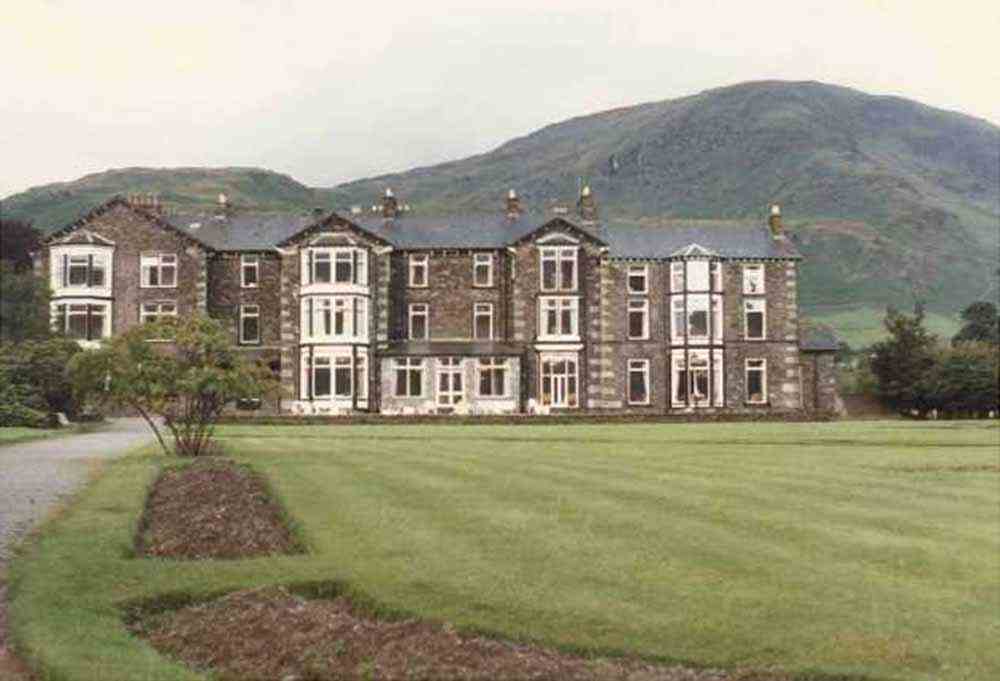
This is William Wordsworth country…
"I wandered lonely as a cloud
That floats on high o'er dales and hills
When all at once I saw a crowd…"
Yes we saw lots of daffodils.
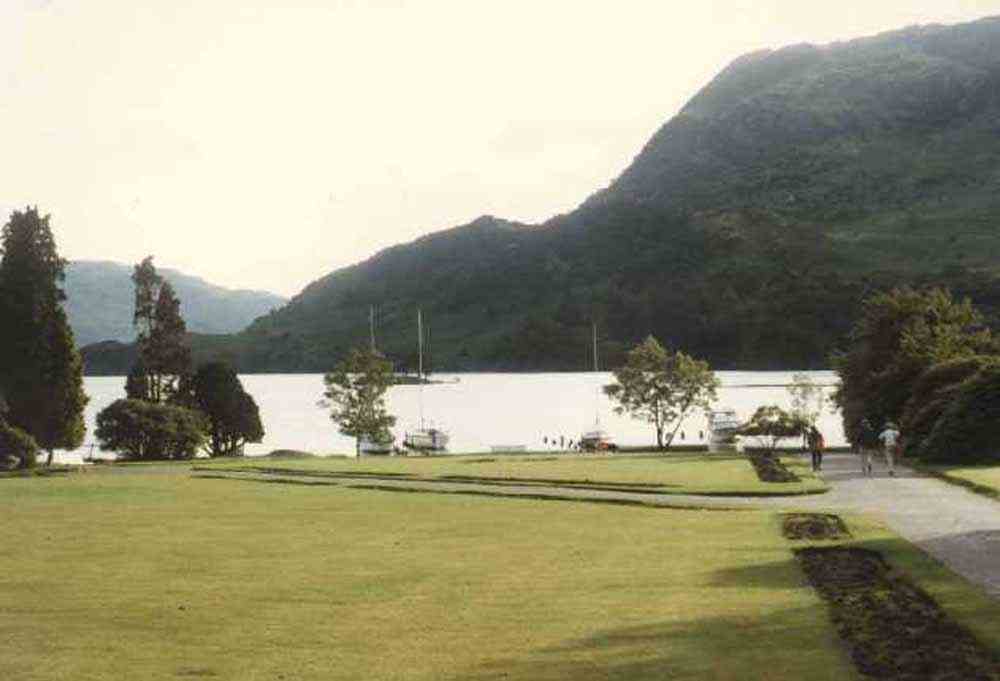
A wet day in Grasmere.
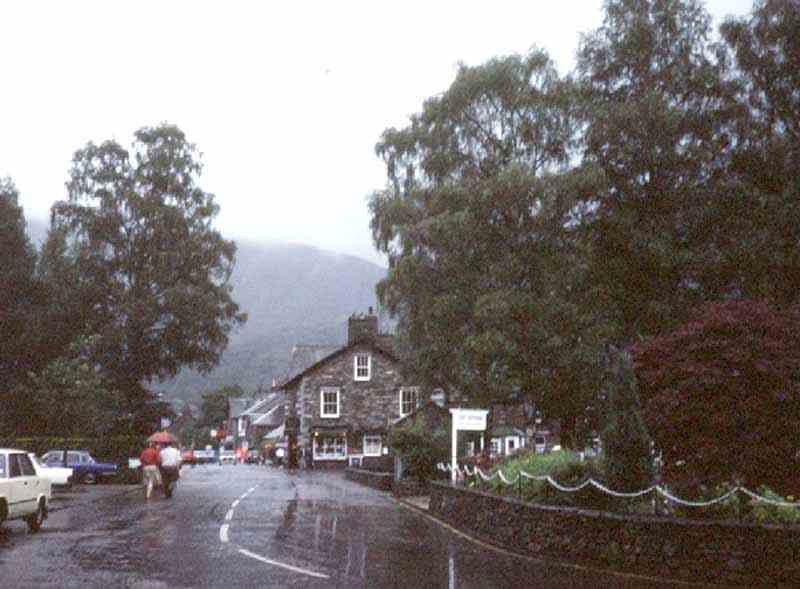
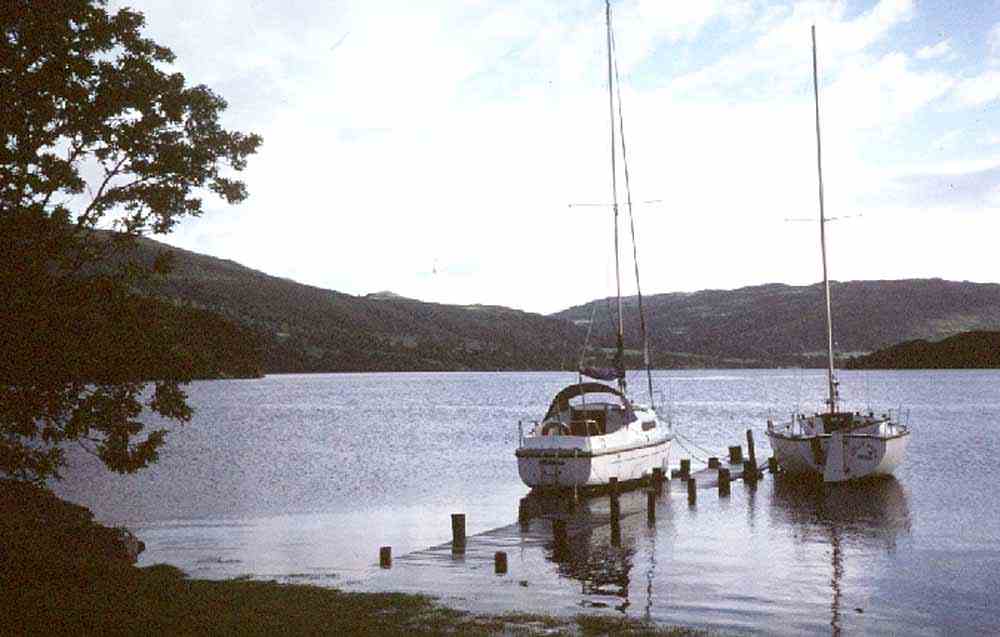
Chester - Western England
Chester escaped the industrial revolution because its taxes were too high.
Consequently it remains a Tudor town as is surrounded by a red sandstone wall
which is the best in Britain and dates back to the Romans.


Wales
Wales has been politically united with England since 1536.
It has the misfortune to be so close to England that it could not be allowed its independence,
and yet far enough away to be conveniently forgotten.
Tintern Abbey ruins.
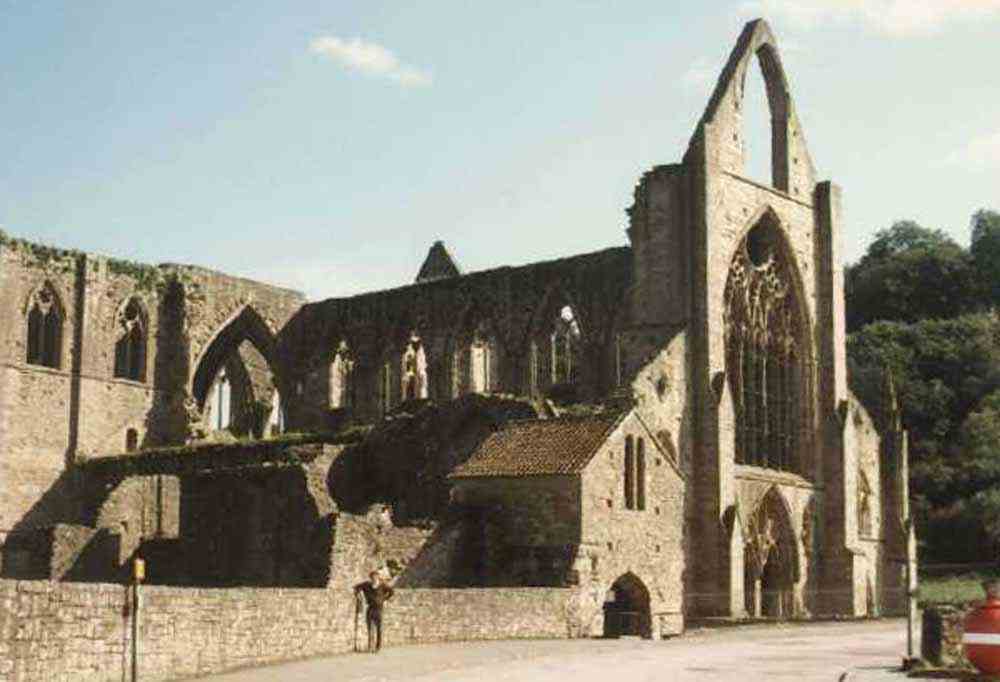
Founded in 1331 but most of the ruins are the remains of buildings built in the late 13th century.
In the 1500s monastic life in England and Wales was brought to an abrupt end by the political actions of King Henry VIII. The Dissolution of the Monasteries was part of the king's policy to establish total control over the church in his realm.
Henry VIII ordered its destruction in 1536.
The grounds were immaculately kept.
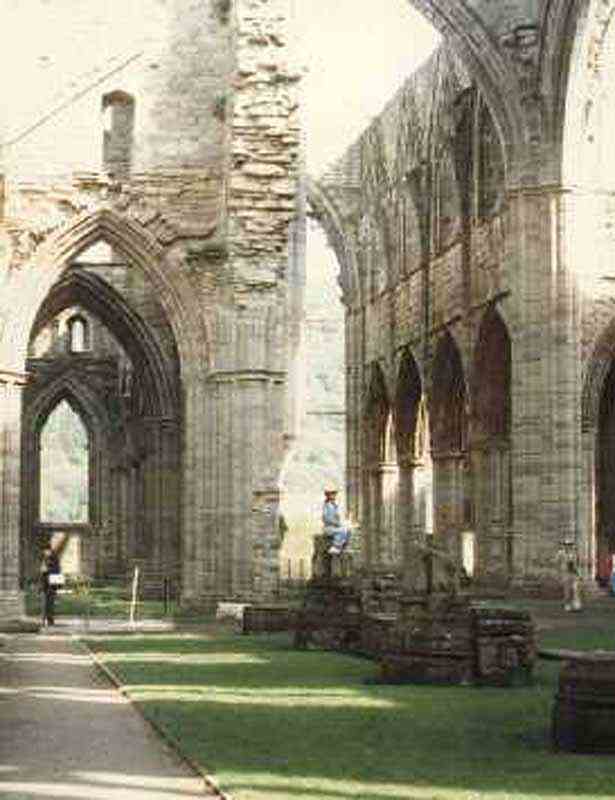
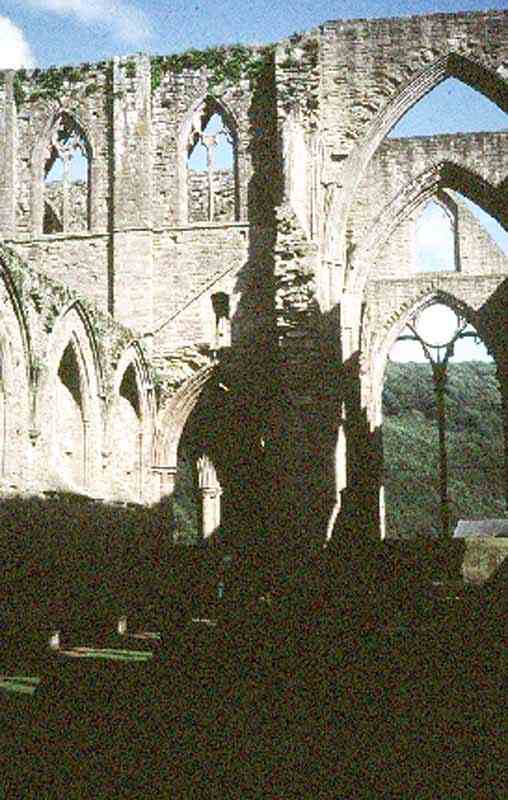
Roman ruins near Tintern Abbey.
The Romans invaded in 43AD and for the next 400 years kept close over the Welsh tribes
from their garrison towns at Chester and Caerlon.
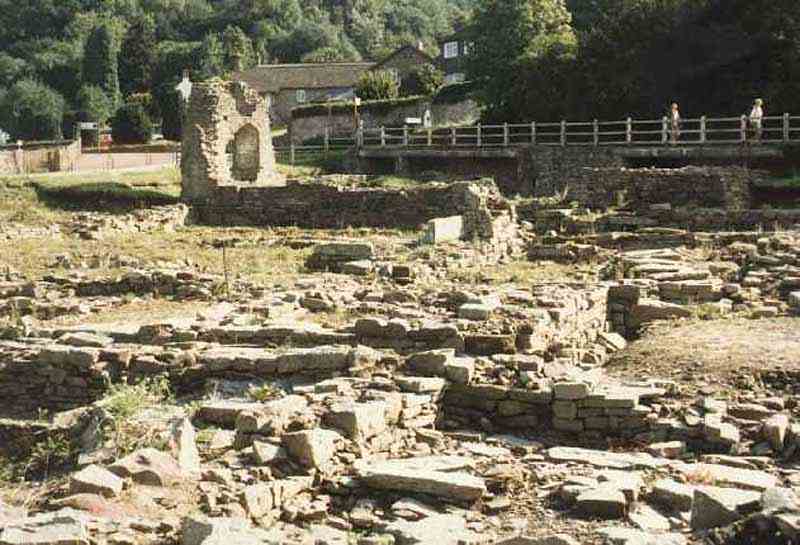
Bath
For more than 2000 years, Bath's fortune has been linked to its hot springs and tourism.
The Romans developed a complex of baths and a temple to Sulis-Minerva.
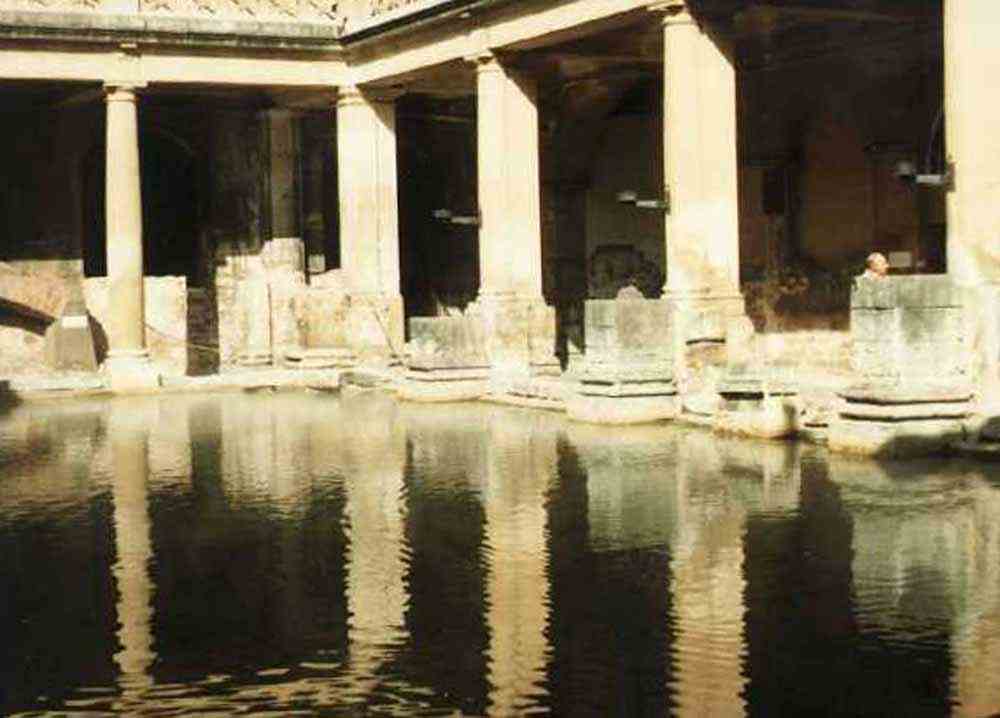
Roman remains at a museum in Bath.
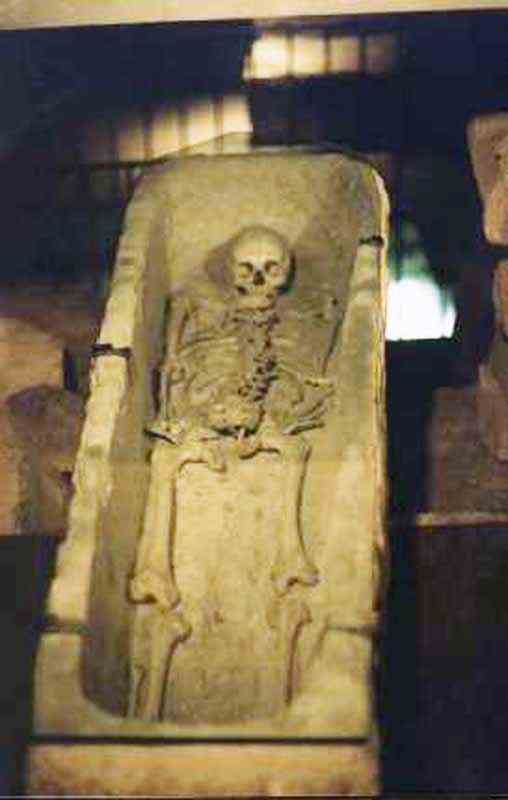
Section of Roof Arch
Part of the vaulted brick roof which covered over the Great Baths.
This was found fallen into its present position amid the mud which had choked the ruined building.
The coursed tiles were originally horizontal.
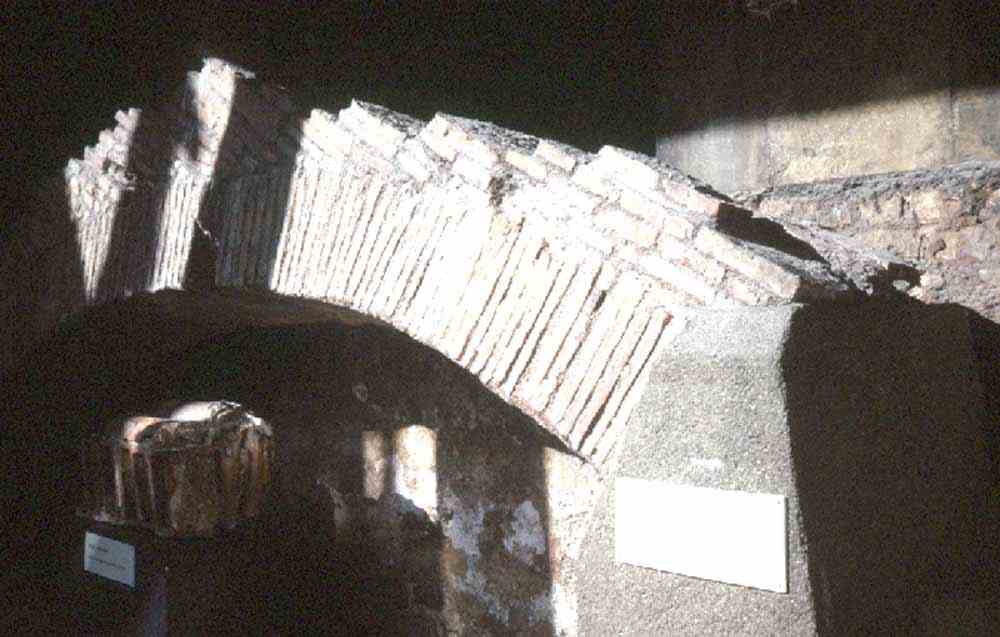
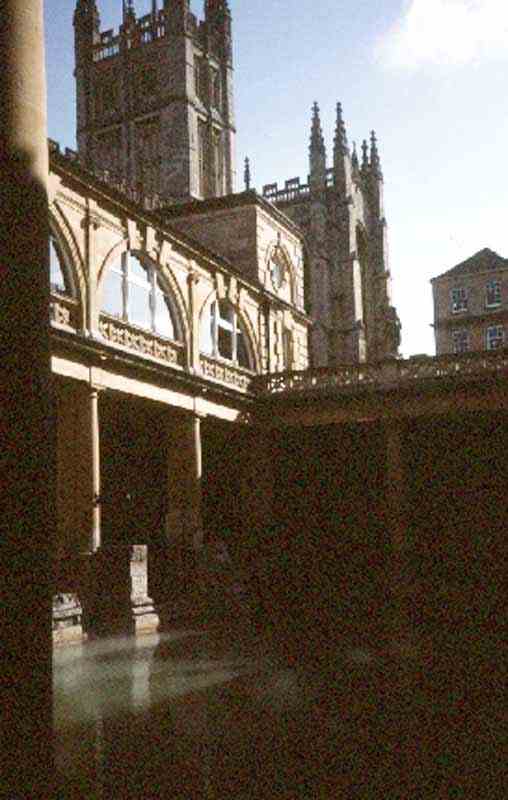
Today however, Bath's most important attraction is its Georgian architecture.
Throughout the 18th century, Bath was the most fashionable and elegant haunt of English society. Aristocrats flocked here to gossip, gamble and flirt. Fortunately, they had the good sense and fortune to employ a number of brilliant architects
who designed the Palladian terrace housing that dominates the city.
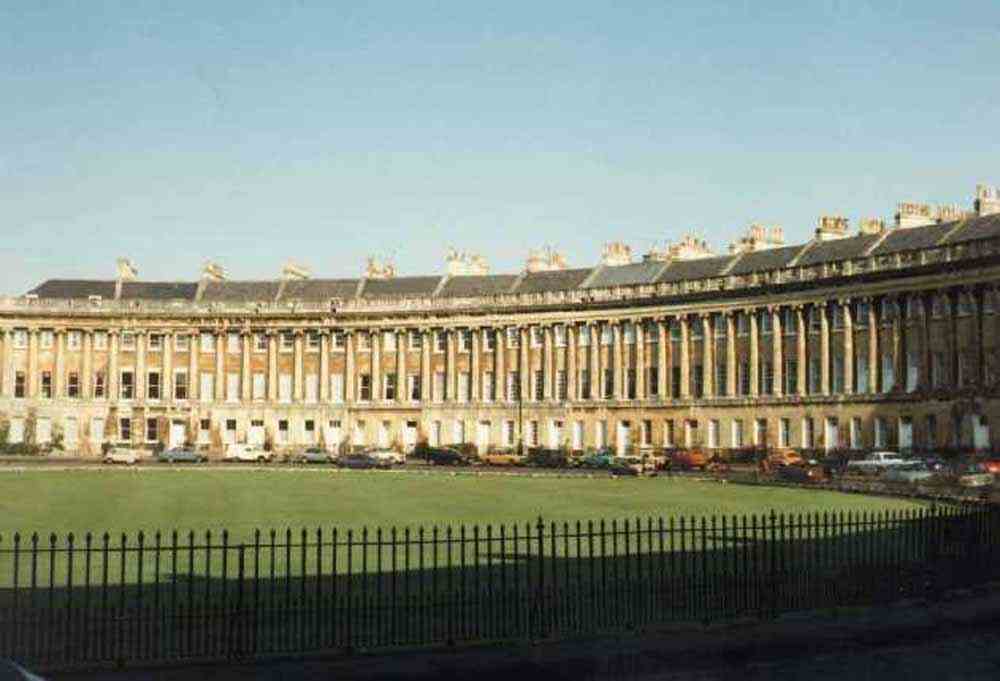
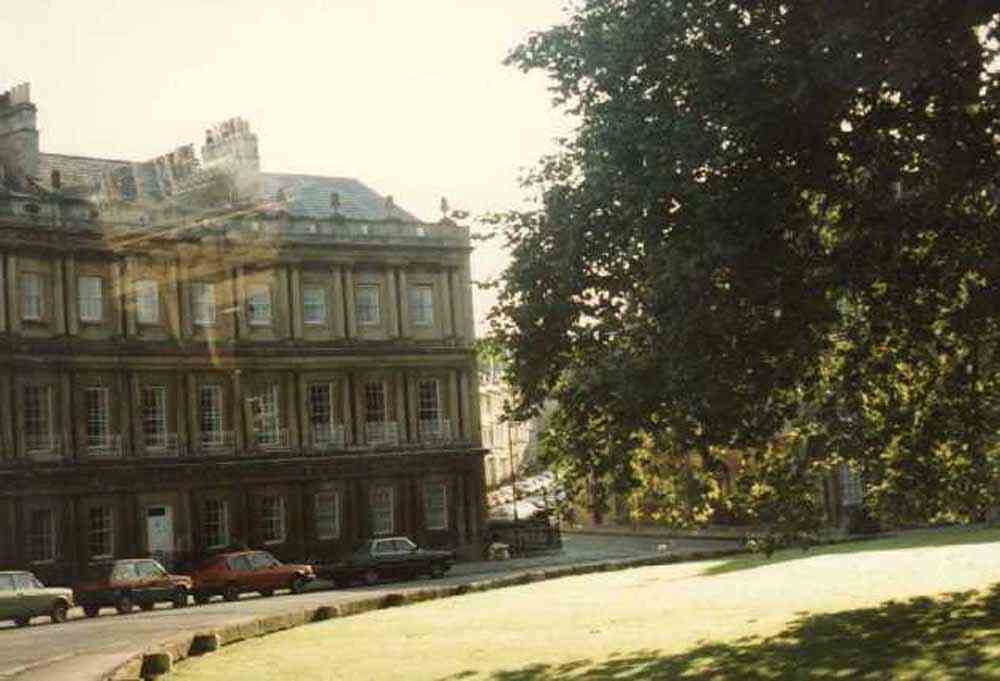
Bristol
Grain knockers at Bristol near Bath.
Merchants spread grain samples on these as they negotiated their sales.
Hence the origin of the phrase on the knocker.

Stonehenge
Stonehenge is the most famous prehistoric site in Europe.
Concentric rings of stones surround a horseshoe of upright stones, and a solitary vertical stone some 100 metres to the NE.
Stonehenge was built between c1900BC and c1400BC in three distinct phases.
Some of the stones were brought from Wales.
It appears to have been both a religious centre and an observatory from which predictions of astronomical events could be made.
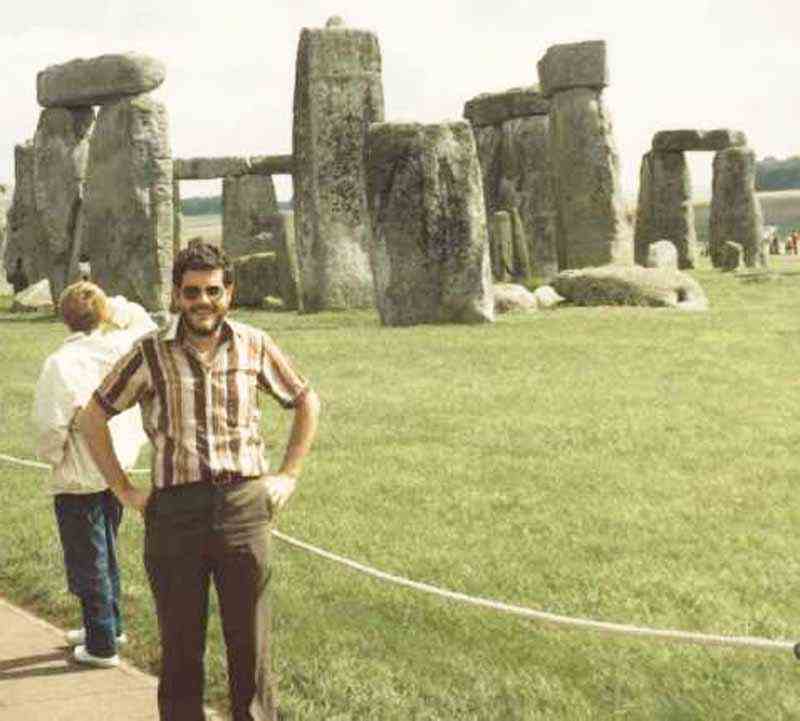
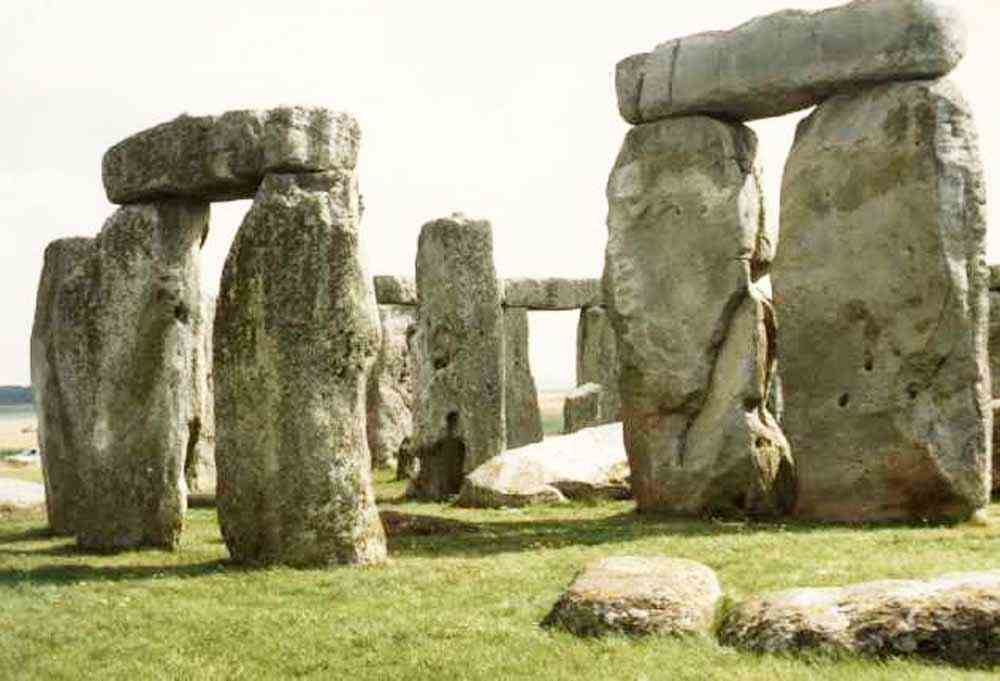
A model in the Science Museum in London showing what is believed to the complete Stonehenge structure.
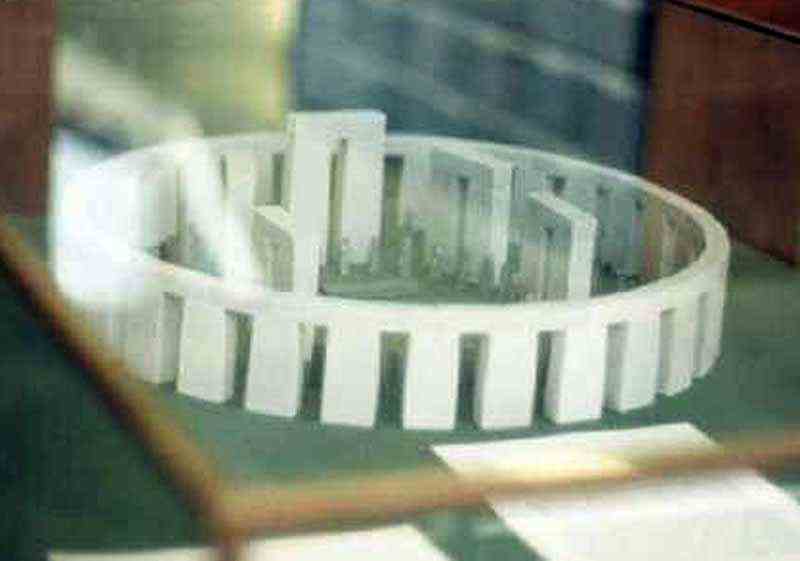
Stonehenge is situated on the Salisbury Plain.
Salisbury Cathedral is built in a uniform style known as Early English (or Early Pointed).
This period is characterised by the first pointed arches and flying buttresses, and has a rather austere feel.
The cathedral owes its uniformity to the speed with which it was built - between 1220 and 1266.
The spire at 123metres is the highest in Britain.
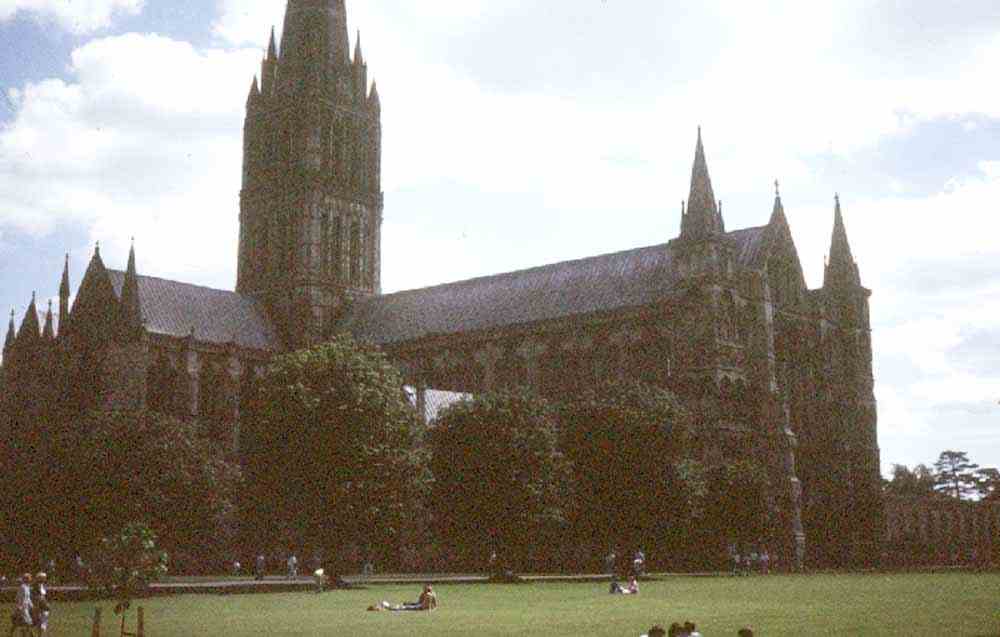
After returning to London,.
I flew to Singapore (13 hours) and eventually home to Melbourne.
A great 13-week Melbourne - Bangkok - Hong Kong - Taipei - Japan -
Trans Siberian Railway - UK - Athens - Israel - Egypt - Western Europe - Singapore - Melbourne trip.
Taking long service leave for the middle school term in 1985 I went on my first trip to Europe.
(A 13-week Melbourne - Bangkok - Hong Kong - Taipei - Japan -
Trans Siberian Railway - UK - Athens - Israel - Egypt - Western Europe - Singapore - Melbourne trip.)
The train trip from Nakhodka on the Pacific Ocean in Russia eventually finished at the Hook of Holland near Rotterdam.
We left the train and got on the ferry Princess Beatrix for the voyage to England.
We sailed at noon and reached the port of Harwich in England at 7pm.
Then we had another train trip from Harwich to London.
London
I had 4 separate stopovers in London between tours.
I had a day at the Lords test match (Australia won the next day).
I queued up for two and a half hours to get a day pass to Wimbledon.
Fortunately they had a small standing area to view the centre court matches.


The 400th anniversary of Marble Arch.
A London church which is nicknamed "the wedding cake".

Piccadilly Circus in London.

Nelsons Column in Trafalgar Square.

The church of St. Martins in the Field near Trafalgar Square.

"Cleopatra's Needle" on the Thames Embankment.
The ship that was originally bringing it to London sank in the Bay of Biscay. Years later it was retrieved.
There are shrapnel marks on it from the first of the World War 1 German bombs which exploded near here.


Nelsons Column in Trafalgar Square.
The dome of St. Pauls Cathedral.

The Royal Eagle Hotel in Paddington where I stayed.

The Kiss at the Tate Gallery in London.
Fortnum & Mason's store in Oxford Street London.
Kew Gardens, London.

The Pagoda in Kew Gardens.

The Amateur Radio room at the Science Museum
The Tower of London which William the Conqueror began to construct in 1078.


A politically correct raven at the Tower of London.

The Tower Bridge as seen from the grounds of the Tower of London.


Buck House





Big Ben at the British Houses of Parliament.



Mummified cats at the British Museum, London.

The Rosetta Stone. Discovered in 1799 it had the same message in 3 different languages (Greek, Egyptian Demotic
and Egyptian Hieroglyphics) and as such was the key to unlocking the mystery of Egyptian hieroglyphics by the French
linguist, Champolion.


Greenwich
Each foot in a different one of Earth's hemispheres at the observatory at Greenwich.




The Cutty Sark at the Maritime Museum at Greenwich.



Leaving Dover on the ferry Reine Astrid for the port of Ostend in Belgium
at the start of my 32-day Western Europe tour.

After the Western Europe tour, I returned to London Ann went on a week-long tour of England, Scotland and Wales.
Oxford
A wet day in Oxford.
Blenheim Palace, one of the largest palaces in England was a gift to John Churchill from Queen Anne and Parliament
as a reward for his role in defeating Louis XIV.
Winston Churchill was born here.
Stratford on Avon
One of 3 theatres at Stratford.
Shakespeare's birth place.
Anne Hathaway's cottage - her family cottage.
Eight years his senior, she married Shakespeare in 1582 bearing him 3 children.

Coventry
The importance of Coventry as an armaments centre made it a priority target during the Second World War. It was the air raid on Coventry on the night of the 14th November 1940 that destroyed the medieval Cathedral of the city and 568 of its citizens.
A new modern cathedral was built adjacent to these ruins.
Lady Godiva's statue.
An Anglo-Saxon gentlewoman, patron of the arts, equestrienne, and tax protester, etc. All the historians say that she "flourished, circa 1040 - 1080 A.D."
Leofric, Earl of Mercia, and husband of Lady Godiva was given responsibility for certain financial matters of Coventry.
Most of the residents were having a hard time, in light of the fact that Leofric, in his new-found megalomaniacal grand-public-works mode,
had been taxing everything he could think of, even including a levy on manure.
The ancient Greeks, Leofric pointed out, and Romans as well, viewed the nude human body as one of the highest expressions of the perfection of Nature.
To present a well formed nude body as an object of great beauty, even art, would be to offer a lesson of inestimable value to the simple peasants of Coventry,
whose experiences and perceptions had never been enlightened to appreciate such perfection.
Lady Godiva could see the plight of the over taxed residents.
If Lady Godiva truly believed in the crusade she was promoting, then she should lead it herself.
After much nagging Leofric proclaimed that if Lady Godiva would ride her horse naked through the crowded market-place of Coventry,
in the full light of mid-day, as an example of the perfection of God's work and as an expression of the highest possible aesthetic
then he would reduce taxes on the populace, lifting from them the burden Godiva perceived, and erasing from himself any further doubt
he might harbor of the sincerity of Godiva's convictions.
To Leofric's absolute surprise, she agreed, once she had ensured that she actually had his "permission" to do so.
She was not alone, but was accompanied by two female aides also on horseback, but normally clothed; one rode on each side and slightly to the rear.
She sat straight and properly in the saddle with a look of composure on her face; relaxed, confident, unashamed.
Her hair was done in two large braids which were curled snugly at the back of her head, one on each side.
People looked at her and saw that she was not merely naked, or nude; rather she was in a higher state of presentation -- being a correct and elevated quality
of her composure, and resulting also from the people's appraisal, appreciation, and consideration beyond simple voyeurism.

York
York Minster cathedral which took over 250 years to build between 1220 and 1480.

Harewood House
The Yorkshire home of the Earl and Countess of Harewood, was designed by John Carr and completed in 1772
with exquisite interiors by Robert Adam.
It is fitted out with numerous pieces of Chippendale furniture some of it like the curtain pelmets built in.
Durham
Edinburgh
Despite its official union with England in 1707, Scotland has continued to maintain an independent national identity.
The ceremonial Scots Guard at Edinburgh Castle.
Edinburgh Castle overlooks the city.
The castle was the seat of Scottish kings.
It is a complex of buildings that has been altered many times by war and the demands of the military.
The smallest and oldest building on the castle site is St. Margaret's Chapel which was built in the 12th century.

The forecourt of the castle where the Edinburgh tattoo is held is used as parking space for tour coaches in the daytime. The area where the tattoo is held is only the size of a couple of tennis courts.
We went to the tattoo on our second night in Edinburgh.

Holyrood Palace where Betty stays when she is in Edinburgh.
We had a tour inside and saw the room where David Rizzo, the secretary and rumoured lover of Mary Queen of Scots,
was murdered in 1565.
Darnley, Mary's husband was involved in the murder.
Then Darnley himself was murdered, presumably by Mary and her future husband, the Earl of Bothwell.
We did not see any of Betty's private apartments or staterooms on our tour.

On our tour out of Edinburgh to Aberfoyle where we viewed the castle in the distance.
I was going to go to St. Andrews in the afternoon but the bus broke down on the morning tour not leaving enough time.
Stirling Castle
Mary Queen of Scots was crowned here.
Stirling has witnessed many of struggles of the Scots against the English.
Heather on the moors.

A loch near Edinburgh.

At Gretna Green just north of the English border.
In 1754, England passed a law that changed Gretna Green's destiny forever, making the village the destination of
thousands of "underage" couples who wanted to wed.
In England, if either party to a marriage was under 21, then they could not marry without parental consent.
This Act did not apply to Scotland, where you only needed to be 16 years old to marry,
as is the case today, with or without parental consent.
In Scotland, a couple had only to declare their intentions to be husband and wife in the presence of two witnesses,
and their word was law.
The Lakes District in north-west England.
The Ullswater Hotel at Glennriding overlooking Lake Ullswater.
This is William Wordsworth country…
"I wandered lonely as a cloud
That floats on high o'er dales and hills
When all at once I saw a crowd…"
Yes we saw lots of daffodils.
A wet day in Grasmere.


Chester - Western England
Chester escaped the industrial revolution because its taxes were too high.
Consequently it remains a Tudor town as is surrounded by a red sandstone wall
which is the best in Britain and dates back to the Romans.
Wales
Wales has been politically united with England since 1536.
It has the misfortune to be so close to England that it could not be allowed its independence,
and yet far enough away to be conveniently forgotten.
Tintern Abbey ruins.
Founded in 1331 but most of the ruins are the remains of buildings built in the late 13th century.
In the 1500s monastic life in England and Wales was brought to an abrupt end by the political actions of King Henry VIII. The Dissolution of the Monasteries was part of the king's policy to establish total control over the church in his realm.
Henry VIII ordered its destruction in 1536.
The grounds were immaculately kept.

Roman ruins near Tintern Abbey.
The Romans invaded in 43AD and for the next 400 years kept close over the Welsh tribes
from their garrison towns at Chester and Caerlon.
Bath
For more than 2000 years, Bath's fortune has been linked to its hot springs and tourism.
The Romans developed a complex of baths and a temple to Sulis-Minerva.
Roman remains at a museum in Bath.
Section of Roof Arch
Part of the vaulted brick roof which covered over the Great Baths.
This was found fallen into its present position amid the mud which had choked the ruined building.
The coursed tiles were originally horizontal.


Today however, Bath's most important attraction is its Georgian architecture.
Throughout the 18th century, Bath was the most fashionable and elegant haunt of English society. Aristocrats flocked here to gossip, gamble and flirt. Fortunately, they had the good sense and fortune to employ a number of brilliant architects
who designed the Palladian terrace housing that dominates the city.
Bristol
Grain knockers at Bristol near Bath.
Merchants spread grain samples on these as they negotiated their sales.
Hence the origin of the phrase on the knocker.
Stonehenge
Stonehenge is the most famous prehistoric site in Europe.
Concentric rings of stones surround a horseshoe of upright stones, and a solitary vertical stone some 100 metres to the NE.
Stonehenge was built between c1900BC and c1400BC in three distinct phases.
Some of the stones were brought from Wales.
It appears to have been both a religious centre and an observatory from which predictions of astronomical events could be made.
A model in the Science Museum in London showing what is believed to the complete Stonehenge structure.
Stonehenge is situated on the Salisbury Plain.
Salisbury Cathedral is built in a uniform style known as Early English (or Early Pointed).
This period is characterised by the first pointed arches and flying buttresses, and has a rather austere feel.
The cathedral owes its uniformity to the speed with which it was built - between 1220 and 1266.
The spire at 123metres is the highest in Britain.

After returning to London,.
I flew to Singapore (13 hours) and eventually home to Melbourne.
A great 13-week Melbourne - Bangkok - Hong Kong - Taipei - Japan -
Trans Siberian Railway - UK - Athens - Israel - Egypt - Western Europe - Singapore - Melbourne trip.